









HR.com’s Future of Talent Acquisition 2023-24 Page 17 - 60 Sponsored by: SEPTEMBER 2023 • Vol.11 • No.09 (ISSN 2564-1964) THE FUTURE OF TALENT ACQUISITION: WHAT’S NEXT?
-Dr. Evan Shellshear, CEO, Ubidy
On the Cover
10 Shaping The Future Of Finance: How To Build A Next-Generation Team
Gen Z’s disinterest in finance careers is creating a talent shortage
- Wellington Wu, CVP, Global Talent, Unit4.
The Future Of Talent Acquisition: What’s Next?

How people, data, AI and automation will impact TA
- Dr. Evan Shellshear, CEO, Ubidy
14 Breaking Borders: How Cross-Border Recruitment Is Helping Companies Fill Critical Roles
Ins and outs of cross-border recruitment as a key talent strategy

- Nick Broughton and Harry Dhillon, Director of Recruit & Hire, GoGlobal.
64 The Essential Role Of Job Descriptions In Compensation Planning
Making fair and equitable compensation decisions with job descriptionsqualifications
- Jean Roque, President and Founder, Trupp HR, Inc.
70 Enhancing Executive Recruitment: The Case For Executive Search Software Over Traditional ATS
Are executive search software an indispensable asset for modern executive recruiters?
- Jason Starr, Chief Executive Officer, Ikiru People

07
Talent Acquisition Excellence SEPTEMBER 2023 Vol.11 No.09
(ISSN 2564-1964) INDEX HR.com’s Future of Talent Acquisition 2023-24 Page 17 - 60
Articles
How Focusing On Skills Can Mitigate Hiring Biases

Hands-on assessment plays a pivotal role in modern talent acquisition

- Lori Cummings, SVP, People Success, Skillable
Mission Possible: Redefining the Candidate Experience


How recruiters can win the race for talent
- Jackie Schierenberg, VP, candidate experience, CommonSpirit Health
How AI Can Revolutionize Lead Generation In Talent Acquisition
Why HR professionals can’t afford to use AI for lead generation in talent acquisition
- Gergo Vari, Founder and CEO, Lensa Inc
Top Picks 12 61 66 74
How AI And Data Science Are Transforming Talent Acquisition In 2023 And Beyond
A quick look at the latest trends and best practices for hiring top talent in the digital age.
- Alana Pratt, HR Advice Specialist, BrightHR Canada
INDEX
Editorial Purpose
Our mission is to promote personal and professional development based on constructive values, sound ethics, and timeless principles.
Excellence Publications
Debbie McGrath CEO, HR.com - Publisher
Dawn
Jeffers VP, Sales
Deepa Damodaran Editor-in-Chief, TalentAcquisition Excellence
Are You Ready for the Future of Talent Acquisition?
In an era marked by ever-evolving dynamics in the realm of human resources, one constant shines through like a beacon: talent acquisition (TA).
Sue
Kelley Director (Product, Marketing, and Research)
Babitha Balakrishnan and Deepa Damodaran Excellence Publications Managers and Editors
Talent Acquisition Excellence Team
Deepa Damodaran Editor

Koushik Bharadhwaj Junior Editor
Chinnavel
Design and Layout (Digital Magazine)
Vibha Kini Magazine (Online Version)
Submissions & Correspondence
Please send any correspondence, articles, letters to the editor, and requests to reprint, republish, or excerpt articles to ePubEditors@hr.com
For customer service, or information on products and services, call 1-877-472-6648
As we navigate the shifting tides of the modern workforce, it becomes increasingly evident that the heart of HR lies in its ability to attract and nurture the right talent.
We have delved elaborately into this in HR.com's Future of Talent Acquisition 2023-24 research report that studied the paramount role that TA plays within the broader HR landscape. The report sheds light on the current state of TA in a world where rumors of a recruitment bear market have been dispelled.
It examines the challenges faced by TA professionals in battling mediocrity amidst a complex talent landscape. Further more, it highlights the stark realities of labor shortages and skill mismatches, underscoring the undeniable importance of soft skills and emotional intelligence in a technology-driven age.
Read Dr. Evan Shellshear's The Future Of Talent Acquisition: What’s Next?, where he discusses how people, data, AI and automation will impact TA, and Alana Pratt's article, where she takes a quick look at How AI And Data Science Are Transforming Talent Acquisition In 2023 And Beyond.
In How Focusing On Skills Can Mitigate Hiring Biases, Skillable's Lori Cummings touches upon how hands-on assessment plays a pivotal role in modern talent acquisition, and in Mission Possible: Redefining The Candidate Experience, CommonSpirit Health’s Jackie Schierenberg touches upon what would it take for recruiters to win the race for talent.
Advertising Opportunities,
Copyright © 2023 HR.com. No part of this publication may be reproduced or transmitted in any form without written permission from the publisher. Quotations must be credited.
For
email: sales@hr.com
Talent Acquisition Excellence (ISSN 2564-1964) is published monthly by HR.com Limited, 56 Malone Road, Jacksons Point, Ontario L0E 1L0 Internet Address: www.hr.com
In the future, the role of the recruiter will evolve into that of a talent advisor, focusing not only on matching skills to job requirements but also on assessing cultural fit and potential for growth within the organization. Soft skills, such as empathy and communication, will become increasingly important in this advisory role.
Finally, the future of TA is a testament to the enduring importance of human capital. While technology can enhance efficiency, it is the human touch that will truly distinguish successful talent
acquisition. Building relationships, understanding individual aspirations, and creating positive candidate experiences will remain at the heart of effective recruitment.

As we stand on the precipice of this exciting future, one thing is clear: the world of talent acquisition will continue to evolve and adapt to meet the evolving needs of both employers and job seekers. With innovation, inclusivity, and a deep commitment to the human element, the future of TA holds the promise of creating workplaces where talent thrives, and organizations flourish.
We hope this edition of Talent Acquisition will help you find excellence in your recruiting, hiring, and onboarding efforts.
Happy Reading!
Disclaimer: The views, information, or opinions expressed in the Excellence ePublications are solely those of the authors and do not necessarily represent those of HR.com and its employees. Under no circumstances shall HR.com or its partners or affiliates be responsible or liable for any indirect or incidental damages arising out of these opinions and content. OR EDITOR’S NOTE Subscribe now for $99 / year And get this magazine delivered to your inbox every month Become a Member Today to get it FREE! SIGN UP Write to the Editor at ePubEditors@hr.com
How are our Talent Acquisition Products and Services helping to make you smarter?

Talent Acquisition Excellence - Monthly Interactive Learning Journal
This monthly interactive learning experience captures key metrics, actionable items and keeps you focused on developing yourself and corporation as top leaders in the Talent Acquisition space.
Talent Acquisition Virtual Events


Talent Acquisition Virtual Events offer webcasts and demos on topics in any of the staffing related programs: Contract Workforce and Talent Exchanges, Online Staffing and Sourcing, Recruitment Process Outsourcing, or Quality of Hire. Learn how to bring the right staffing and recruiting programs into your organization and make them impactful. Listen to the world’s top thought leaders in the staffing industry as they help companies make decisions in all areas of staffing and recruiting. Each Virtual Event consists of up to 10 credit webcasts.
Talent Acquisition Webcasts for Credit
HR.com webcasts deliver the latest Talent Acquisition industry news, research trends, best practices and case studies directly to your desktop. Webcasts are available live online with a downloadable podcast and a copy of the slides (PDF) available before and after each webcast. Earn all of the required recertification credits for aPHR, PHR, SPHR, GPHR, and SHRM Certifications. HR.com’s one-hour webcasts, in every HR specialty including Talent Acquisition, are pre-approved for HRCI and SHRM credit (excluding Demo webcasts).
Talent Acquisition Community
Join almost 55,000 HR.com members with a similar interest and focus on staffing and recruiting topics with one of the four staffing related online communities: Contract Workforce and Talent Exchanges, Online Staffing and Sourcing, Recruitment Process Outsourcing, or Quality of Hire. Share content and download research reports, blogs, and articles, network, and “follow” peers and have them “follow” you in a social network platform to communicate regularly and stay on top of the latest updates. This well established Community is an invaluable resource for any HR professional or manager.
Use these invaluable Talent Acquisition resources today! For more information phone: 1.877.472.6648 | email: sales@hr.com | www.hr.com
The Future Of Talent Acquisition: What’s Next?
How people, data, AI and automation will impact TA
By Dr. Evan Shellshear, Ubidy
Introduction
In today’s rapidly changing job market, human resources management and recruitment are undergoing a profound revolution. With the workforce comprising diverse age groups and generations, HR must adapt to the reality of new working culture and technological advancements.
The integration of smarter people management and artificial intelligence (AI) is transforming the talent acquisition process, streamlining tasks, and improving the overall candidate experience.
This article has reviewed the latest trends in reports like Korn Ferry’s Talent Acquisition Trends for 2023 as well as other publications from HR leaders such as Patrik Reman. We summarize these trends in this article by looking at the people side and then the data, AI and automation sides.
The People Trends
Korn Ferry identified seven trends
on the people side that are impacting talent acquisition and we present the first six, being focused on people and the seventh belonging to the data, AI and automation trends.
1. Internal mobility trend: Professionals are increasingly seeking career growth through lateral moves within their current organizations. Employers will need to focus on developing their current workforce, and offering training programs to upskill or reskill employees for future roles.
2. Continuous employee empowerment: To combat the “Great Resignation,” organizations need to prioritize continuous employee empowerment, offering cross-training and opportunities for career development. Investing in internal mobility will help retain top talent and foster diverse pipelines.
3. Collaboration between talent acquisition and talent management: Organizations will strengthen the alliance between talent acquisition and talent management teams, working together to ensure a seamless journey from recruitment to career development and succession planning.
4. Rise of interim workers: The number of professionals opting for short-term gigs and contract work is expected to grow. Companies will need to adapt to hybrid work models, utilizing both full-time employees and interim workers to meet varying workforce needs.
5. Work-life integration: Candidates will seek companies that promote work-life integration, allowing flexible work schedules to accommodate personal responsibilities. Employers will focus on employee well-being,
Talent Acquisition Excellence presented by HR.com September 2023 7 Submit Your Articles
COVER ARTICLE
offering inclusive benefits and mental health support.
6. Boomerang employees: The trend of former employees returning to their former companies, or “boomerang employees,” is expected to increase. Organizations will focus on maintaining relationships with former workers and leveraging their institutional knowledge.
These are all key people trends that companies can leverage on the people side to make their talent acquisition smarter and deliver a competitive advantage.
Data, AI and Automation in Talent Acquisition
AI-based technology has become a crucial tool in talent acquisition, helping HR teams
automate application screening, save time, and improve workload management. AI can analyze big data, identify patterns, and efficiently shortlist candidates based on predetermined criteria. AI also helps remove biases and enhance the quality of hires, ensuring a more inclusive recruitment process.
Recruitment Marketing and Online Recruitment
Recruitment marketing has evolved beyond posting job ads online. With fierce competition for talent, recruiters must use marketing strategies to attract qualified candidates effectively. AI-powered platforms like recruitment agency marketplaces allow easy scaling up and down of agency engagements.

Online recruitment has proven effective, especially in targeting the younger demographic, with social media platforms like LinkedIn and Facebook being significant sources of prospective candidates. While online recruitment offers many advantages, recruiters need to address challenges like cost management and measuring effectiveness to optimize their strategies.
Evidence-based Hiring
Evidence-based recruitment relies on data, science, and evidencebased tools to make informed hiring decisions. General cognitive ability (GCA) has shown to be a robust and versatile screening method for most jobs. Combining GCA with other methods like personality and logical thinking
Talent Acquisition Excellence presented by HR.com September 2023 8 Submit Your Articles The Future Of Talent Acquisition: What’s Next?
tests enhances predictive validity. Structured interviews, powered by AI, help eliminate biases, ensuring a fair and consistent assessment of candidates. By leveraging evidence-based methods, companies can improve the quality of their hires and reduce turnover.
AI Chatbots
AI-powered chatbots have become valuable tools in talent acquisition, enabling efficient candidate interactions and providing quick responses to common questions. These chatbots can pre-screen candidates, shortlist suitable applicants, and improve the overall candidate experience. Companies must strike a balance between AI automation and maintaining a human connection to ensure a positive candidate journey.
Benefits and Risks of AI and Automation
AI and automation offer numerous benefits for the modern recruiting process. By automating repetitive tasks, recruiters have more time for creative talent
acquisition efforts. AI helps reach key performance indicators, such as reducing hiring time and increasing qualified applications. Moreover, AI enables HR teams to identify patterns in recruiters’ biases and improve the hiring process continuously.

However, there are risks associated with AI and automation, particularly in candidate experience. Incorrect automated emails or unhelpful chatbots may negatively impact candidates’ satisfaction. Companies must be vigilant in ensuring AI algorithms do not introduce biases of their own, and human oversight remains crucial. Organizations should also always control who has access to candidate data and ensure PII is protected.
Via not just AI, automation will continue to shape recruiting, simplifying tasks and improving productivity. Automated candidate nurturing through email campaigns and newsletters allows recruiters to stay in touch with potential candidates efficiently. Companies can save time and money by investing in comprehensive HR and recruit-

ment systems that eliminate the need for external documents and spreadsheets like some of those mentioned above.
Conclusion
The future of talent acquisition is exciting and offers something for all interested professionals. Whether your passion lies with processes and people or AI and automation both are creating a more efficient approach to recruitment. Balancing both people and technology in a balanced humanistic and datadriven approach will enable companies to adapt to the evolving job market, attract top talent, and remain competitive in the future.
Dr. Evan Shellshear is the Managing Director and Group CEO of Ubidy, and an expert in artificial intelligence with a Ph.D. in Game Theory from the Nobel Prize-winning University of Bielefeld in Germany. He has almost two decades of international experience in the development and design of AI tools for a variety of industries having worked with the world’s top companies on all aspects of advanced analytical solutions from optimization to machine learning in applications from HR to oil and gas, and robotics to supply chain. He is also the author of the Amazon best-seller, Innovation Tools.
Would you like to comment?
Talent Acquisition Excellence presented by HR.com September 2023 9 Submit Your Articles
The Future Of Talent Acquisition: What’s Next?
Shaping The Future Of Finance: How To Build A Next-Generation Team
Gen Z’s disinterest in finance careers is creating a talent shortage
By Wellington Wu, Unit4
If you’ve had trouble recruiting or retaining finance professionals over the past few years, you’re not alone. It’s a growing issue as Baby Boomers retire and Gen Z shows less interest in pursuing jobs in fields like finance, which some perceive as more traditional and less flexible. At the same time, demand for finance talent is outstripping supply due to economic growth and a complex regulatory environment. A talent shortage in a critical field like finance can result in negative effects like longer, more expensive recruiting cycles and burnout among overstretched teams. When organizations hire less qualified individuals and open positions remain unfilled, productivity declines. But you can get ahead of the trend with a plan to address the finance talent shortage and prevent performance issues. It starts with assessing your current approach to hiring for finance positions and taking stock of your organization’s strengths. There’s no one-size-fits-all solution. Some companies can compete on salary. Others might offer more advanced technology assets or development opportunities. Every organization is different, but here are some tips that can help you build a next-generation finance team.
● Be tech-forward: Gen Z job candidates are interested in the technology tools they’ll use on
the job and are more likely to factor that into their decision to take a position or stay with an employer. In fact, according to CFO.com, 70% of Gen Z workers said they’d leave their current job for better tech, along with more than 50% of Gen X employees and over a third of surveyed Baby Boomers.
So, being a tech-forward company is a plus when recruiting Gen Z. If you can emphasize your company’s digital transformation roadmap, that can be an effective way to attract qualified finance professionals. If your organization is investing in AI tools that automate mundane tasks and give people more time to focus on higher-level work and professional growth, that can also be compelling to tech-focused job candidates.
● Focus on well-being: Gallup notes that an employer’s stance on employee well-being was important to workers in every generational cohort even before the pandemic. But in the wake of the Covid-19 outbreak, finding an employer who cares about employee wellbeing became the top priority for Gen Z and Millennials, who now make up nearly half of the workforce.
Talent Acquisition Excellence presented by HR.com September 2023 10 Submit Your Articles
Investing in benefits, offering employee wellness days, and providing more flexibility so staff can enjoy a better work-life balance can help you appeal to wellness-conscious candidates of all ages, including Gen Z. Employers can achieve this by focusing on the outcomes employees deliver rather than hours spent at the office. For prospective employees who perceive the finance field as overly rigid, emphasizing your company’s flexibility and focus on results can make a difference.
● Offer non-linear development opportunities: Professional growth is also a priority for Gen Z job candidates, but keep in mind that career development doesn’t have to follow a straight line. Offering non-linear career paths may be especially feasible in finance since the core skills are applicable to other areas of the business. When you tell applicants that starting out in finance can lead to positions outside that core function, it can be appealing to those candidates who value options.

In addition, many managers recognize that traditional annual performance reviews aren’t effective, but they may be unsure what to offer instead. A performance and development approach that features frequent feedback and enables managers to offer coaching and mentoring options, not just in finance but also in other areas of the business, can help. Curated learning paths are a great way for finance managers to help individuals develop new skills and knowledge.
● Listen, seek allies, and be ready to adapt: As always in HR, it’s important to listen to candidates, peers, leaders in the organization, and other stakeholders since everyone will offer a different perspective. Also pay attention to trends in your internal HR data, like job satisfaction rates, and externally sourced trend information. No generation is a monolith, and job seekers’ wants and needs evolve over time, so it’s critical to be ready to adapt when new trends emerge.
As you develop a strategy to create a next-generation finance team, look for sponsors within the organization who can provide input and help you champion the program, and obtain C-suite buy-in to emphasize that the program is a priority. Remember that change can be difficult and you won’t be able to fix finance recruiting or retention all at once, so manage expectations as you move forward.
Generally, when you’re developing an organization, you have three ways to acquire talent: buy, borrow, or build. Depending on your growth phase, you might need to use all three to get the talent you need simultaneously. A company that’s scaling rapidly might have to access talent using every means, whereas a more mature organization can focus on building talent over time.
The talent shortage in finance may prompt more HR professionals to focus on building talent since paying top salaries for experienced employees (buy) or contractors (borrow) may not be as feasible. So now is a good time to be intentional about identifying junior talent for development. By keeping an eye on what’s ahead and these tips in mind, you can build a great next-generation finance team.
Would you like to comment?
Talent Acquisition Excellence presented by HR.com September 2023 11 Submit Your Articles
Shaping The Future Of Finance: How To Build A Next-Generation Team
Wellington Wu is VP of Global Talent at Unit4.
How Focusing On Skills Can Mitigate Hiring Biases
Hands-on assessment plays a pivotal role in modern talent acquisition
By Lori Cummings, Skillable
Intoday’s rapidly evolving job market, where diversity and inclusion are increasingly being recognized as essential to creating a collaborative and resourceful business, the power of skills has emerged as a formidable tool to counteract the biases that can infiltrate the hiring process.
Traditional hiring processes emphasize factors that include titles and a candidate’s background or education, but may not accurately reflect a candidate’s adaptability, capability, or ability to learn and grow within a rapidly changing landscape. Focusing on skills enables employers to assess candidates on a level playing field, making smarter hiring decisions and avoiding costly compliance risks.
Hands-on assessment plays a pivotal role in the modern talent acquisition and retention process. It showcases a candidate’s capability, confidence, and competence to apply theoretical knowledge in real-world situations. Employers can mitigate hiring biases and ensure a more equitable selection process by focusing on a candidate’s demonstrable abilities and proven accomplishments rather than abstract or dated qualifications.
When recruiters give applicants opportunities to engage in projects, simulations, or practical challenges, their abilities take center stage, overshadowing an interviewer’s preconceived biases. Skills-focused assessments align closely with job requirements, enhancing the probability of successful job performance and decreasing hiring mistakes that can be costly to productivity and morale.
Candidates evaluated through a hands-on assessment are more likely to demonstrate the practical knowledge and problem-solving abilities necessary to excel in their roles. This method supports employers in making informed decisions based on candidates’ genuine potential to contribute effectively to the organization and mitigates hiring biases.
Utilizing the results of hands-on skill assessments levels the playing field for candidates, showcasing their skills in the selection process and overshadowing any biases that might otherwise cloud hiring decisions.
Leveling the Playing Field
Skills are objective facts and data points, providing concrete evidence of proficiency -- a tangible
Talent Acquisition Excellence presented by HR.com September 2023 12 Submit Your Articles
TOP PICK
reflection of a person’s abilities and future potential to perform in a role, transcending unconscious or conscious biases related to gender, race, age, or other non-essential factors.
By evaluating candidates based on practical abilities and bringing hands-on experiences into the talent acquisition process to validate skills, organizations open themselves up to a more diverse pool of talent that might otherwise be overlooked due to unintentional or intentional biases.
The foundational change to using hands-on, skills-based assessments provides added protection from allegations of discriminatory hiring due to matching job-specific needs with clearly proven and validated abilities. Also, there is an organic benefit of furthering organizational DEI efforts. The legal and productivity risks of solely relying on traditional interviewing practices to determine a candidate’s likelihood of success in a role are replaced with accurate, measurable data.
Skills assessment rooted in hands-on learning offers a promising solution to not just acquiring talent that can be successful in the job, but also supporting an organization’s talent management strategy by objectively supporting internal talent mobility, talent resource redundancy, and talent retention.
Since you now have proof of abilities, the candidate pool will include people you may not have considered, both externally and internally—a game changer for your talent acquisition teams, hiring managers, and your organization.

Break out of the box and escape the silos. Can an engineering project manager be a good fit for a product marketing position? Yes, which means you have a new candidate pool if the skills align with the role! Internal candidates are given greater consideration for an expanded or new career path, which could further promote the organic spread of diversity and inclusion across organizations.
Employees prove and continuously develop and refine skills through direct current hands-on experience versus being judged by their current professional or historical job titles.
As hiring skilled talent continues to be a critical variable in the overall success of organizations, hiring compliance and supporting a diverse workforce will remain a top priority. Hands-on assessments and learning will ensure all of these priorities are equitably managed with the simplicity of facts and applied business intelligence.
Lori Cummings is SVP of People Success at Skillable
Would you like to comment?

Talent Acquisition Excellence presented by HR.com September 2023 13 Submit Your Articles
How Focusing On Skills Can Mitigate Hiring Biases
Breaking Borders: How Cross-Border Recruitment Is Helping Companies Fill Critical Roles
and
By Nick Broughton and Harry Dhillon, GoGlobal
The global business landscape is moving forward at a breakneck pace, shaped by a perfect storm of factors including economic volatility, a talent shortage for key roles and the rise of remote work as a permanent operating solution. Rather than get caught in the rain, strategic companies are turning to cross-border recruitment to secure top talent from around the world and add valuable skills to their teams.
In this article, we’ll explore the ins and outs of cross-border recruitment as a key talent strategy. We’ll identify the top roles that are perfect for global recruitment, demonstrate how they can help you save money, and explain why they can promote natural diversity and support global expansion. Plus, we’ll also talk about the challenges in tapping into cross-border talent pools and how companies are overcoming them with employer-of-record (EOR) solutions.
So, let’s jump in!
Top Roles for Cross-border Recruitment
One of the most sought-after positions for cross-border recruitment is the (SaaS) sales manager. This role plays a crucial part in establishing a company’s foothold in a new market. To ensure success, companies seek candidates who possess a deep understanding of the local business culture and marketplace.
Other roles that companies are recruiting cross-border include software engineers, data scientists, digital marketers and customer support specialists. To secure top talent for specialized roles that are not readily available in their local geographic area, companies are casting their nets further and expanding the search beyond their borders.
The following are the top six recent roles:
Talent Acquisition Excellence presented by HR.com September 2023 14 Submit Your Articles
Ins
outs of cross-border recruitment as a key talent strategy
Saas Sales Managers Remote Sales Managers Software Engineers
Data Scientists DevOps Specialists
Customer Support Specialists
Empowering Cost-effective Talent

Going cross-border empowers companies to tap into a global pool of candidates and secure top talent for specific roles – very often at a lower cost. With the rise of remote work, companies can now recruit and hire talent from anywhere in the world without incurring the costs associated with relocating employees.
In addition, companies can also benefit from cost efficiencies related to the cost of living and wages in different parts of the world. This means companies save on labor costs while still securing top talent.
Here are the annual salary benchmarks we have recently observed for the role of software as a service (SaaS) sales manager in different countries:
Country Annual Salary (USD)
USA $110k - $115k
Nigeria $25k - $30k
Brazil $50k - $55k
UK $120k - $130k
Germany $110k - $115k
Japan $85k - $90k
Australia $110k - $115k
”Walking the talk” in diversity, equity and inclusion (DEI)
Remote work makes it possible for companies to hire people from different cultures, backgrounds and experiences, thereby organically creating a diverse and inclusive workforce. Moreover, remote work also provides flexibility and opportunities for a wider range of workers – such as parents, caregivers, people with disabilities, and those living in remote areas – to access job opportunities they may not have been able to explore before.
Global cross-border remote recruitment not only promotes a more diverse and inclusive workforce but also contributes to a more equitable job market overall. In addition, a diverse workforce brings different perspectives and ideas, leading to better decision-making and innovation.
By tapping into a global pool of talent, companies can positively impact their bottom line, workforce, customers, investors, local communities, and more.
Opening New Doors for Global Expansion
Cross-border recruitment opens new doors for global expansion, such as paving the way for go-to-market strategy, test market strategy and greater supply chain flexibility. By hiring local talent, companies can gain a better understanding of the local market, culture and regulations – which enables them to tailor their products and match service offerings with the needs and interests of the local market.
Talent Acquisition Excellence presented by HR.com September 2023 15 Submit Your Articles Breaking Borders: How Cross-Border Recruitment Is Helping Companies Fill Critical Roles
In addition, hiring local talent can help companies build relationships with local suppliers and partners, improving supply chain efficiency and reducing costs.
EOR: Empowering Recruitment and Hiring for Key Roles


Even though cross-border hiring offers many benefits, there are also challenges to consider, such as permanent establishment risks, taxation, employment risks, IP protection, regulatory compliance, and managing cross-border HR and payroll.
But there’s good news: companies can use an employer of record (EOR) hiring solution to tackle these challenges. An EOR acts as a legal employer for the remote worker, taking care of payroll, taxes, benefits and regulatory compliance.
With an EOR, companies can mitigate the risks associated with cross-border hiring, such as creating
a taxable presence in another country and violating local labor laws. Additionally, an EOR can ensure that the remote worker signs an intellectual property (IP) agreement and follows the company’s policies and procedures to protect the company’s intellectual property.
Navigating local laws and regulations can also be complex and time-consuming, but an EOR has local expertise and can help ensure compliance, reducing the risk of fines, penalties and harm to the company’s reputation.
In some cases, an EOR can also provide strategic support in terms of recruitment and engagement. With this added support, companies can be sure they are getting the best talent for their critical roles – no passport, visa, or business registration required!

Talent Acquisition Excellence presented by HR.com September 2023 16 Submit Your Articles
a
and
Nick Broughton is
Partner,
Harry Dhillon is the Director of Recruit & Hire at GoGlobal.
Breaking Borders: How Cross-Border Recruitment Is Helping Companies Fill Critical Roles
Would you like to comment?









Sponsored by: Special Research Supplement September 2023 INTERACTIVE September 2023 HR.com’s Future of Talent Acquisition 2023-24 Create a strategically aligned talent acquisition function
19
HR.com’s Future of Talent Acquisition 2023-24


Create a strategically aligned talent acquisition function Talent acquisition remains a high priority


Survey conducted by: Sponsored by:


ARTICLE
The 4 Reasons You Should Embrace a Skills-Based Hiring Approach for 2023 and Beyond
By Andrew Nelesen, SHL
3 Reasons You Might Miss Records in Background Screening
By Clare Horvik, Verified Credentials, LLC
Top Challenges for HR Decision Makers Facing the Future of Work
By Seamus Moore, Atlas
The Most Common Mistakes in Diversity Recruiting
By Katie Coleman, Circa
Data-Driven Collaboration: The Future of Talent Acquisition
 By Nick Livingston, Honeit
By Nick Livingston, Honeit
AI and the Future of Talent Acquisition
By Aspect Building a Modern Talent Ecosystem
By Brett Coin, Findem
3 Keys to Retaining Top Talent and Driving Productivity in Today’s Workplace
By Globalization Partners
How to Refresh Your Recruitment Plan (and Hire Smarter)
By Employ
The HR Research Institute, powered by HR.com, the world’s largest social network for Human Resources professionals, is a key part of our mandate to inform and educate today’s HR professionals. Over the past three years, the HR Research Institute has produced more than 85 exclusive primary research and state of the industry reports, along with corresponding infographics in many cases, based on the surveys of thousands of HR professionals. Each research report highlights current HR trends, benchmarks, and industry best practices. HR Research Institute Reports and Infographics are available online, and always free, at www.hr.com/featuredresearch

INDEX
RESEARCH REPORT SUMMARY
22 26 29 33 36 40 44 49 55
HR.com’s Future of Talent Acquisition 2023-24
Create a strategically aligned talent acquisition function

Talent acquisition remains a high priority



Sponsored by:


Despite numerous seismic shifts that have reshaped the landscape of human capital in recent years, one constant remains unwavering. The more things change, the more talent acquisition (TA) stays as the most critical function within the greater HR organization.
As per ‘HR.com’s Future of Talent Acquisition 2023’ research report, TA remains a top priority for the vast majority of organizations.


Rumors of a bear market in recruitment have, so far, been greatly exaggerated, and recruiting remains a critical enterprise. Silicon Valley layoffs dominated the news earlier this year, but it turns out they were exceptions to the rule when looked at across all industries. Many organizations had just the opposite problem.
However, TA’s battling a persistent mediocrity.
As per the report, there are only about 75 U.S. workers available for every 100 job openings in July 2023, though those numbers vary widely from
state to state. Of course, the economy will always have an impact on talent acquisition, and that long-predicted recession may still strike.
But from what we can see right now, today’s labor shortages aren’t going away anytime soon.
Even if we didn’t have literal labor shortages, we would still have significant mismatches between the skills needed by today’s organizations and the skills available. This is especially true in the so called area of soft skills and emotional intelligence. For better or worse, no machine in the world has the knack for being a people leader.
We need to go beyond the outdated war metaphor.
The “war for talent” metaphor is now over a quarter of a century old, and we think it has done little to no help in inspiring the TA function to address its many challenges. Too often, our profession still lacks consistent and repeatable results that can be tied back to specific
STATE OF THE INDUSTRY RESEARCH 19
practices. And, we still have not made enough progress in perennial problems such as skills gaps.
Moreover, there’s no “winning” the “war for talent.” There’s only a neverceasing endeavor to hire and advance good people who can help your organization find the balance between being highly productive and highly attractive. Is there some idealism about TA here? Sure, but we think a little idealism is good for the soul, and it helps put our research findings in the right context.
Given below are the major findings from the research.
Many of Today’s TA Functions Struggle
Finding: Just one-fifth of organizations describe their TA functions as Advanced or World class
Respondents were asked to choose which state of development best describes the talent acquisition function in their organization. It turns out that many have work to do. Under a fifth describe their TA function as “Advanced” (11%) or “World class” (7%).
However, over a third describe the TA function in their organization as “Established.” This leaves a large portion (45%) of respondents in the lower three levels of this maturity model.
Competition Drives Talent Acquisition
Finding: Increased competition within market or industry influences the TA strategy and activities in over half of organizations
What influences an organization’s TA strategies or activities?
Organizations continue to grapple with increased competition within markets or industry (51%) along with the need to backfill existing positions (51%). These have remained the top two influencers of the TA function over the last year, based on our longitudinal data.
Retaining top talent also helps address these issues, so we believe that it’s important to establish an employer brand this strong both inside as well as outside the organization.
Prioritized TA Functions Have Better Capabilities
Finding: Over two-fifths say that TA is among their HR department’s top three priorities today
How important is TA relative to other HR-related issues? About one-fifth (17%) believe TA is the single most important talent-related priority in their organizations. A quarter (26%) say it is among the top three talent-related priorities and more than a quarter (29%) say it is at least within their top five talent-related priorities.
In other words, most (72%) view it as at least a top-five priority, and a whopping 94% view it as at least a top-ten issue. As we see later in the report, organizations that prioritize TA to a greater degree benefit from a more capable and strategically aligned TA function.
20 STATE OF THE INDUSTRY RESEARCH
Differences based on size of organization.
The factors influencing TA differ based on size of organization. For large organizations, the most influential factor for TA is the need to increase diverse representation within the organization (55%). For mid-size organizations, it is the need to backfill existing positions (66%). For small organizations, increased competition within market and need to hire for newly created positions to support future business growth (52%) is most influential.
Survey Question: Which of the following factors currently influence your organization’s TA strategies or activities? (select all that apply)
Increased competition within market or industry
Backfilling existing positions
Need to hire for newly created positions to suppor t future business growth
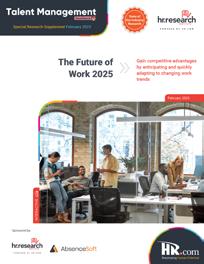
Changing business circumstances (e.g., economic conditions)
Need to increase diverse representation within the organization
Need to upskill or augment existing organizational capabilities
Changing candidate behaviors and job search trends
Need to create sustainable/ scalable hiring practices
Adjusting to more limited resources (e.g., budget)
Diversification/expansion of business
Increased internal mobility
Changing work schedules/arrangements
Two-fifths of respondents believe that changing business circumstances will have an impact on TA strategies and activities
To learn more, we invite you to download and read the research report today:
Read the Research Report
21 STATE OF THE INDUSTRY RESEARCH
0 10 20 30 40 50 60 51% 51% 45% 42% 40% 40% 39% 39% 36% 24% 22% 16%
The 4 Reasons You Should Embrace a Skills-Based Hiring Approach for 2023 and Beyond
Why the key to creating agile, evidence-backed hiring systems requires a skills-based hiring approach
By Andrew Nelesen, SHL

Recently I had the privilege of facilitating several roundtable conversations with talent acquisition leaders from Fortune 500 powerhouse organizations like Mastercard, Nationwide, Honeywell, Sutherland, PayPal, and others. It was a thrill to share best practices and explore the many successes (and some failures) that have led to meaningful Talent Acquisition (TA) growth and maturity within some of the most respected HR teams in the world. In addition to walking away from these conversations energized about the future of recruiting, I was more convinced than ever that the key to creating agile,
evidence-backed hiring systems requires a skillsbased hiring approach. There are 4 critical reasons why skills are the future of hiring:

1. The future of work
2. The emergence of potential
3. The power of DE&I
4. The criticality of talent intelligence
The Future of Work
Job changes are happening faster than ever. We are seeing revolutionary advances in Artificial Intelligence (AI) and automation dramatically
STATE OF THE INDUSTRY RESEARCH 22 ARTICLE
affecting how work is accomplished. Crowdsourcing and gig workers are changing the nature of who does work. And flexible, hybrid and remote working has significantly altered when and where work is done for millions of employees. These monumental shifts in the very nature of work have dramatically altered the skills that allow employees to survive and thrive. Forward-thinking TA leaders are taking this opportunity to build stronger partnerships with internal business stakeholders, leading the effort to understand and document the emerging skills that will enable business success in the digital age. So, dust off those old job descriptions and more importantly, anchor and structure your conversations with internal stakeholders around the emerging skills profile that will be needed as the business evolves.
The Emergence of Potential
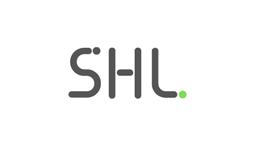
With the future of work becoming more volatile and ever-changing, the evaluation of candidates against
a narrow view of job-specific requirements is becoming less helpful. While specific knowledge, experience, or key skills that allow new hires to be successful quickly is still important, the qualities that allow individuals to thrive in a rapidly changing business landscape are also needed. Skills like adaptability, resilience, learning potential and flexibility are key! The good news is candidates are begging for the opportunity to broadly demonstrate their skills and interests, and they are motivated by organizations that take real action in their ongoing development. According to Qualtrics, job seekers are willing to forego up to 12% of their salary in exchange for growth and development opportunities. A skills-based hiring model allows you to capture the skills that inform a candidate’s readiness to be successful today, while also exploring their potential for an uncertain tomorrow.

23 ARTICLE
According to Qualtrics, job seekers are willing to forego up to 12% of their salary in exchange for growth and development opportunities.
The Power of DE&I
With talent markets being so competitive and the future of work so uncertain, the need to embrace and engage new talent pools has never been greater. Research shows that employees from different backgrounds and perspectives contribute toward innovation, new perspectives, thought processes, and problem-solving skills. When designing hiring strategies our goal should be to place less emphasis and priority on education and CV qualifications that tend to simply reinforce hiring decisions that are status quo. If the goal is to engage new and different talent pools, we still need to isolate hiring criteria that help us identify the best candidates. And skills provide a much better, more inclusive, and fairer way to identify great talent from all types of backgrounds and experiences.
The Criticality of Talent Intelligence

My roundtable conversations reminded me of the importance of maturing the talent acquisition function with data-driven insights and analytics. “Run the TA function in a manner that would make your CFO proud” was a comment shared by one of the forward-thinking leaders on the panel. At SHL, we have found that skills intelligence is among the most usable and powerful talent data you can collect in today’s climate. Organizations are building “skills hubs” including skills data,
technology, and governance to power strategic decisions and drive mobility and agility. Unfortunately, only 33% of companies have a single source of skills data across the company yet 70% of executives say talent analytics is a top priority.
While talent assessments have long been used to increase hiring efficiency and drive quality of hire, they now serve as a critical tool to funnel into the organization the skills needed to accelerate your talent-led digital transformation. Align objective assessment data against your critical skills of the future, discover those hidden gem candidates with the skills and potential to thrive in your changing business context, finally make progress against your important DEI goals, and build a skills-based talent dataset to create a lasting competitive advantage. As one of my astute roundtable panelists shared at the close of our session – “we live in a skills world, it’s up to us to adapt”.
Partner with SHL in your Volume Hiring strategy to identify best-fit candidates with the perfect balance of skills ready for roles today and potential for the future.
Would you like to comment?

STATE OF THE INDUSTRY RESEARCH 24 ARTICLE
Andrew Nelesen is the Global Leader of SHL’s Volume Hiring practice, partnering with SHL customers on the design and optimization of data-driving hiring solutions for the past 10+ years.
Talent Analytics Shouldn’t Be Difficult
Talent data no longer needs to be siloed and difficult to analyze. With SHL, you simply assess your people once and enjoy unlimited reuse of the data by viewing it through different lenses - one solution, all the analytics you need.

Learn more
Scan to learn more.
shl.com


BACKGROUND SCREENING YOU CAN TRUST <10 seconds for live support 100% U.S. based operations 1000s of happy customers 39+ years proven experience Pre-integrated technology partners Hassle-free setup & transition verifiedcredentials.com 800.473.4934 Get the treatment you deserve... UPDATE SCREENING TO MATCH YOUR TALENT ACQUISITION STRATEGY Find out how Verified Credentials can help: LEARN MORE
3 Reasons You Might Miss Records in Background Screening
 By Clare Horvik, Verified Credentials, LLC
By Clare Horvik, Verified Credentials, LLC
Background screening can take many forms. There are checks to verify all kinds of information like criminal history, academic history, employment history, driving record, residency status, license status, and substance use. These use various methods to verify information, including database checks and phone calls. “Records” are generally the results generated by any of these screening activities. And despite the various methodologies used, you can miss records that may be vital to your business if

you’re not utilizing the right types of searches and verifications.
The goal of screening is to have a full picture of your candidate – including potential risks they introduce and their qualifications. But sometimes, things fall through the cracks. Depending on how you choose to conduct your background screening, you could miss important information about your candidates. Often, there are three main reasons why gaps occur. Let’s take a closer look at each common issue.
STATE OF THE INDUSTRY RESEARCH 27 ARTICLE
1. Not Searching Broadly Enough
There are over 3,000 counties in the United States, and the average person has been to 12 or more states. The truth is that crimes can be committed anywhere. So, if you’re only focusing on local searches, like state or county criminal searches where a candidate currently lives, you could be overlooking records.
A “broad” background search is as expansive as possible and can be determined by the number of locations searched, names used, how many attempts are made to verify information, and more. How you address these areas in your background checks can directly affect the quality of information you receive in a candidate’s background report. Not considering these factors can potentially limit what you search for, and more importantly, what you find.
2. Not Searching All Sources
Local criminal record searches are generally the main focus of any background check, and rightly so. People tend to commit crimes in areas where they spend the most time. But there are other
information sources — such as federal criminal sources, driving reports, and the sex offender registry — that can contain information not often included in local criminal history checks.
3. Not Searching Often Enough
While most HR professionals rightly concentrate on pre-employment screenings, you may want to consider expanding your efforts. More and more companies are now electing to re-screen employees regularly as a way of ensuring they don’t miss new records.


With a better understanding of where your background screening gaps might occur, you can start to fill them in. Download Verified Credentials’
3-Step Plan to Stop Missing Records for some tips to get started.
Ready to close your background screening gaps? Contact Verified Credentials to learn how they might help you start finding more records.

Clare Horvik is Sr. Contributor and Vice President of Marketing at Verified Credentials, LLC. With over 17 years of experience in background screening, Clare Horvik fuels the content development engine of Verified Credentials with strategic insights, unique research and analytics, and target-driven campaigns and events. Clare is a Senior Contributor at Verified Credentials who has led new product releases, developed training and education programs, and is always on the lookout for new ways to share Verified Credentials’ experience with HR professionals.
Would you like to comment?
STATE OF THE INDUSTRY RESEARCH 28 ARTICLE
Top Challenges for HR Decision Makers Facing the Future of Work
By Seamus Moore, Atlas
The current economic landscape is unlike any we’ve experienced in recent history. A host of complex and multifaceted issues have combined on an international level to create a challenging environment for businesses to thrive. Since the start of 2023, companies of all sizes have significantly reduced their total number of people employed as the heady days of the pandemic fade into memory.
According to layoffs.fyi, the running total for job redundancies in the tech industry alone for 2023 is more than 212,000 at the time of writing, with the likes of Microsoft, Amazon, and Meta all laying off thousands of workers in recent months.
Chris Cavanagh, General Partner at Guidepost Growth Equity, adds that “the era of ‘growth at all costs’ has ended.” We have now entered a new phase where the biggest concerns for companies are profitability while containing costs and, above all else, survival.

While the main agenda for many businesses at the moment is reducing costs, HR decision-makers are facing more unique challenges. Here’s how this new market environment is creating challenges for HR professionals.
1. Talent Shortages
Despite the media frenzy over global layoffs, almost all industries face real talent shortages. The 2023 WEF Future of Jobs Report found that more than half of the employers indicated difficulty in solving their skills gaps locally, and this inability to attract talent is one of the primary barriers to transforming their businesses to remain competitive.
As if that wasn’t enough, retaining top talent appears to be even more difficult. The recent media hubbub about the “quiet quitting” crisis is not without basis — a recent Gallup survey indicates that at least half of the U.S. workforce is performing at the bare minimum expected of them in their roles.
This does not infer a lazy or disinterested workforce. Instead, it highlights the unique challenges presented by the modern workplace — where remote or combined work has become the norm, job uncertainty is at an all-time high, and expectations from management are becoming less obvious.
STATE OF THE INDUSTRY RESEARCH 29 ARTICLE
“The era of growth at all costs has ended”; what HR decision-makers need to know
2. Lack of Employee Engagement
Is employee engagement really on the decline? According to Gallup, the quiet quitting phenomenon can’t be denied.
The overall decline [in engagement] was especially related to the clarity of expectations, opportunities to learn and grow, feeling cared about, and a connection to the organization’s mission or purpose — signaling a growing disconnect between employees and their employers.
- Gallup, ‘Is Quiet Quitting Real?’
The new world of remote working plays a major role in this. The ability to work from anywhere — one of the few benefits of the COVID-19 pandemic for many workers — now appears to be under attack in certain industries like technology and financial services.
Indeed, while some predicted the end of the traditional office, mid-2023 saw a large-scale return. As reported in the Wall Street Journal, office occupancy rates in some parts of Asia ranged from 80% to 110% by February, meaning more people were in the office than before the pandemic. EMEA and North America are now also looking at 80% office occupancy.
However, workers remain resistant. According to Gallup research, six out of 10 U.S.-based employees with remote capable jobs want a combined work relationship. Of those surveyed, one-third prefer fully remote work, and fewer than 10% want to work on-site.

In addition, 50% of major global companies expect to cut office space by 10% to 20% because it remains empty. The global landscape has changed since the start of the pandemic, and the growing pains are real. The future of work is here.
3. Reduced Budgets
The shift towards cost management and containment in the new market environment has resulted in slashed sales and marketing budgets across industries — however, HR budgets are under heavy scrutiny as well.
According to Fortune, 25% of HR budgets decreased in 2023, compared to 12% in 2022. The uncertainty that runs through almost all international and domestic markets has meant that companies are tightening their belts and remaining cautious about the budget they’re allocating to recruiting and new hires.
Yet despite the lurking shadow of a possible recession, organizations need highly skilled talent to remain competitive and capture future growth. Here’s how an Employer of Record (EOR) is helping employers stay lean and prepare for future growth opportunities.
The Future of Work and the Employer of Record (EOR)
In 2023 and beyond, businesses will face many competing priorities from the top down.
On the one hand, cost containment and a focus on profitability instead of growth is the driving force behind most business decisions in 2023. On the other hand, the inability to access and retain top-quality talent in the rapidly shifting global labor market threatens an organization’s ability to rebound and make its mark on the next decade of innovation.
STATE OF THE INDUSTRY RESEARCH 30 ARTICLE

Modern organizations currently face a headwind of continued economic, geopolitical, environmental, and technological disruption. Conversely, the same technological disruption is expected to provide a tailwind of potential unlike anything humanity has experienced.
 — Pete Tiliakos, GxT Advisors
— Pete Tiliakos, GxT Advisors


However, in the midst of every crisis comes great opportunity.
In the 2023 climate of economic uncertainty, business leaders — including their senior human resource officers (SHROs) and other HR professionals — who adopt new ways of working and attract the greatest talent will be the ones to prosper in the coming decade.
In particular, the nascent Employer of Record (EOR) industry and its increasing integration into wider HR functions offer great opportunities for maximizing business potential. An EOR partner can help companies expand internationally with ease and help onboard, manage, and pay their global workforce, while ensuring compliance and HR peace of mind.
Seamus Moore is Senior Vice President for Global Marketing at Atlas HXM, the leading direct EOR partner with entities in over 160 countries. He is a senior executive with extensive experience in the development of multi-site and multi-channel go-to-market strategies for eCommerce, telecoms and multinational corporations.
Would you like to comment?
STATE OF THE INDUSTRY RESEARCH 32 ARTICLE
The Most Common Mistakes in Diversity Recruiting
By Katie Coleman, Circa
Many organizations today are actively working toward adding more diversity to their workforce, and the importance of doing so only increases by the day. Diversity in an organization isn’t just about the type of people you have on your team — diversity and inclusion starts as soon as the recruitment process begins. These are the top five most common mistakes HR leaders and recruitment teams are making at the recruitment stage, and what you can do to avoid making the same mistakes.
#1: Not Checking for Bias in Job Posts, Descriptions, and Offers
Biased language significantly impacts the perception of an organization’s commitment to diversity, equity, and inclusion (DEI), and it is extremely easy for unconscious bias to sneak its way into job posts, descriptions, and offers undetected. This includes things like genderspecific language, ageism, and even the lack of consideration for people with varying abilities.
It’s important to screen your job listings and other forms of recruitment communication for these types of biases, whether that is by seeking the trusted review of various team members and colleagues or using a software like Circa’s that automatically removes job description bias by blocking out particular details about candidates from their resumes.

#2: Forgetting What People Really Need for Diversity to Work
Diversity is not a cut-and-dry policy implementation. Instead, it’s an ongoing process for fostering equity, inclusion, and belonging throughout your organization. Even if you have a shiny recruitment policy focused on finding and hiring diverse candidates, it will all crumble if those you hire don’t feel a sense of safety and welcome within the workplace.
So, what does inclusion look like in your organization? What do your unique and individual employees need to show up to work as their authentic selves and contribute their ideas without hesitation? One way to ensure employees are being heard is to regularly have them complete an anonymous survey asking them to provide feedback on what they would like to see in the organization. Another way to help make employees feel welcome is to plan out events for the year that focus on inclusion like having speakers come present for important DEI holidays. Overall, a deep focus on inclusion and belonging will ultimately make diversity recruiting easier in the long run as your existing clients and employees will speak highly of your commitment to DEI and creating an inclusive culture.
STATE OF THE INDUSTRY RESEARCH 33 ARTICLE
#3: Failure to Translate DEI Policy into Action
In order for diversity recruiting to work, organizations have to actually hold themselves accountable for achieving results from their DEI efforts. Simply updating policies won’t do the trick. In fact, 75% of surveyed companies in 2020 say they treat DEI as merely a compliance issue. By doing this organizations are ignoring the ways that DEI can transform their organization and letting any challenges that come up overshadow the work they are doing.
This is where companies need to focus less on performative action and social capital and truly dive into embedding DEI in their organization’s culture. There is real work that must be done to make diversity recruiting (and beyond) a reality.
#4: Relying on a Best Guess to Set Goals
Diversity hiring is no different from regular hiring such that using available data and setting realistic goals makes it easier to remain accountable. Rather than using a best guess and hoping for results, recruitment teams need to use employee and candidate data to plan a hiring strategy that aligns with their overall goals and makes those goal-oriented results measurable.
For example, a company may set a goal to have the diversity in their company reflect the diversity of the surrounding area using population data,
or use compensation data tools like LaborIQ to ensure that your offers are competitive and fair.
#5: Neglecting Corporate Culture
Company culture is a critical factor for today’s job seekers. One Glassdoor study found that 96% of job seekers say it’s important to work for a company that embraces transparency. Additionally, 88% of job seekers say that a healthy culture at work is vital for success.
Millennials in particular are prioritizing “people and culture fit” above everything else in the workplace. If recruitment teams focus solely on diversity within the recruiting process (e.g., job posts, interviews, offers, etc.) they are missing a key factor in overall DEI success. It’s important for your organization to be transparent both internally and publicly about your commitment to diversity and inclusion.

At Circa, our Advancing Belonging and Inclusion (ABI) product includes a comprehensive calendar of DEI celebrations and holidays, ready-to-use communication templates, and a DEI content library that supports DEI strategies with tips and best practices. Using this tool you can engage with employees and educate them to create an inclusive and understanding culture.
For more information on how to build a robust diversity recruitment strategy, reach out to us today or visit our library of resources
Katie Coleman is Product Marketing Manager at Circa

Would you like to comment?

STATE OF THE INDUSTRY RESEARCH 34 ARTICLE


Circa | (800) 984-3775 | circaworks.com SaaS-Based Diversity Recruitment & OFCCP HR Compliance Technology Solutions LEARN MORE
Data-Driven Collaboration: The Future of Talent Acquisition
 By Nick Livingston, Honeit
By Nick Livingston, Honeit
In the world of Talent Acquisition, communication is the key to success. The intricate web of conversations between hiring managers, recruiters, external partners, interview teams and candidates is evolving.
A fundamental shift towards data-driven collaboration is reshaping every touchpoint, from the initial intake call to screening calls to the final candidate presentation. This transformation is leading to a more efficient, transparent and impactful recruitment process.

STATE OF THE INDUSTRY RESEARCH 36 ARTICLE
Intake Calls: Where Insights Begin
with the hiring manager, will also reduce candidate withdrawals later in the interview and hiring process.

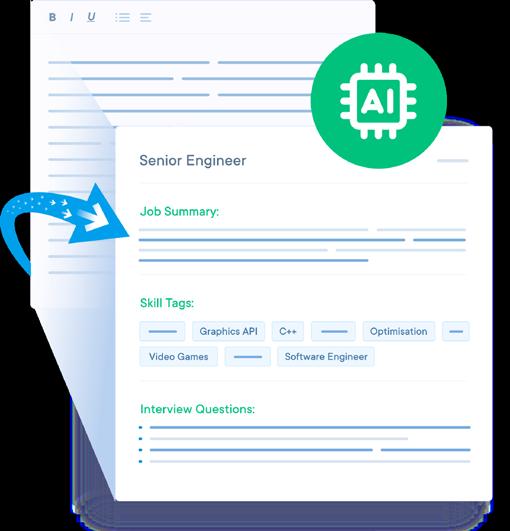
Tailored Conversations for Informed Assessments
Conversations with candidates lie at the core of recruitment. In the past, internal recruiters had the advantage of in-depth company knowledge and personalized questioning, while external recruiters often struggled to capture the finer nuances of a company’s culture and values. This challenge is addressed by custom call guides, leveling the playing field.
The recruitment journey often begins with the crucial intake call - an interface between the hiring manager’s vision and the recruiter’s expertise. This conversation yields valuable insights that were once confined to isolated silos. Now, through intake call insights and conversation intelligence, the essence of the role is shared seamlessly with all stakeholders, without requiring everyone’s time and participation in the intake call process.
Hiring managers’ preferences and vision are now captured through intake call data, audible quotes and real-time job insights, transcending traditional job descriptions. External recruiters, internal Talent Acquisition teams and candidates gain a more profound understanding of the role, by hearing objective insights, directly from the source. This results in better stakeholder alignment and a focused search for candidates who better resonate with the opportunity. This improved opt-in from candidates, who resonate
Recruiters can transform data from intake calls and job descriptions into specialized call guides for any job opening, including inquiries about company culture, technical skills and industry-specific knowledge. Structured call guides not only bring consistency to interviews and upskill every recruiter to perform technical phone screens, but also facilitate data sharing and promote collaborative analysis to ensure fair and accurate candidate evaluations.
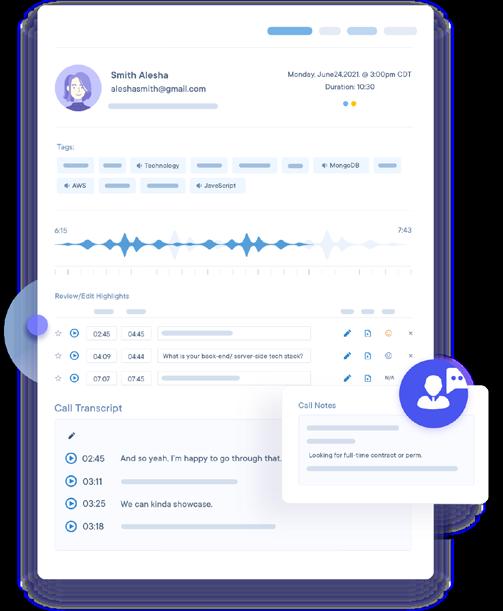
Candidate Presentations: Data-Driven Collaboration

From Silos to Synergy: A Unified Future

As the Talent Acquisition landscape evolves, so do the way we communicate and collaborate. The vision is clear: a future where insights replace assumptions, where data fuels decisions and where Talent Acquisition thrives in the realm of transparency and efficiency. In this new way of doing things, collaboration isn’t just a trendy word—it’s what makes recruitment work better. As the lines between different recruiting groups continue to disappear, the power of shared knowledge shows how the industry is committed to finding the best candidates and helping organizations succeed in the future.
In the final stages of the recruitment process, candidate presentations reflect the influence of data-driven collaboration. Historically, recruiters share their interpretation of what took place during a screening call, which leaves room for misinterpretation, miscommunication and individual bias. The extracted quotes and interview responses are instantly shared with all stakeholders, enabling recruiters and hiring teams to collectively base their decisions on concrete data rather than gut feelings.

This shift from subjective opinions to objective data is the driving force behind minimizing bias, maximizing transparency and simplifying collaboration. Now multiple hiring managers in the organization can instantly assess candidates from a single conversation with the recruiter.
It’s important to note that this process goes beyond mere presentations; it’s about conveying a candidate’s essence. Data-driven insights empower everyone involved to look beyond resumes and evaluate a candidate’s potential, fostering better alignment among stakeholders.
Through the convergence of intake call insights, custom call guides, and real-time interview data, Recruiters and Talent Acquisition partners can communicate and collaborate like never before. The recruitment journey transforms from a collection of disjointed conversations into a harmonious symphony of shared wisdom. The impact is profound: better-informed decisions, deeper understanding of roles and enhanced alignment between internal and external stakeholders.
Nick Livingston is the Co-Founder and CEO of Honeit. Nick has worked as a talent acquisition leader at MTV Networks, Viacom, and TubeMogul (IPO/ Adobe), and recently as a recruitment consultant and talent advisor. Before founding Honeit, he also worked at two other HR technology companies (Taleo & NextSource). Nick started his career as a technical recruiter (aka headhunter) in New York City. He moved to NYC to work in the music business but quickly realized that product managers and software engineers were the new rockstars!
Would you like to comment?
From intake calls to exit interviews, discover how Data-Driven Communication and Collaboration empowers HR to recruit, hire, and retain top talent.


Intake Calls
Screening Calls
Reference Calls
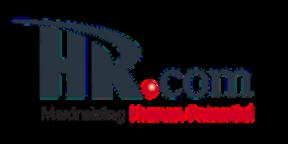
Interviews
Onboarding Calls

Performance Calls
Mobility Interviews
Stay Interviews
Exit Interviews
the
Honeit Wins 1st Place at HR.com in Phoenix!
Attract
Right Candidates. Streamline the Hiring Process. Retain Your Best Employees.

AI and the Future of Talent Acquisition
By Aspect

Introduction
Let’s not kid ourselves. Hiring is broken. Yes, we’ve got decades of experience, techniques, and gut instincts, but if we look at the data—the bad hires, the time drain, and the sheer unpredictability of the process—it’s obvious. What if I told you there’s a seismic shift happening right now? One where Artificial Intelligence is not just a sidekick but your co-pilot in making hiring as close to foolproof as it can get. Stick with me; we’re about to take a deep dive into the revolution that AI brings to hiring and why you should care.
AI Decoded: Beyond the Hype and Headlines
Talk of AI often brings to mind visions of self-driving cars, space exploration, or even dystopian futures. But strip away the Hollywood sheen, and you’ll find something much more profound. AI excels in its ability to reason, analyze, and sift through mountains of data to arrive at useful insights. Large language models act as reasoning engines, with the sum total of human knowledge embedded in them. They aren’t just code; they’re reflections of us, learning from the patterns we feed into them. Their practical application in hiring is not just useful— it’s revolutionary.
The Executive AI Paradox: Ready to Leap, But Where To?
51% of U.S. executives are excited about AI. They acknowledge its potential to ramp up productivity, with 44% planning to increase their AI use in the next year. However, the paradox lies in the how. How do you apply AI to existing processes? For Talent Acquisition, the road is clearer than for most.
The Inherent Flaws of Current Hiring Systems
Current hiring methods aren’t just flawed; they are a bundle of inefficiencies, biases, and missed opportunities. Unstructured interviews can feel more like theater than meaningful dialogue. And it’s not just the interview stage. It’s the days of lost productivity scrolling through résumés, the black hole of communication between hiring teams and candidates, and the incalculable cost of poor hires that detonate like time bombs within an organization.
STATE OF THE INDUSTRY RESEARCH 41 ARTICLE
The State of Hiring Today
The Random Interview Game
Remember the last time you asked a candidate to describe a challenge they overcame, and you got a memorized tale that told you nothing?
Unstructured interviews are a dice roll. We’ve all had bad hires, and they aren’t just costly; they’re a cultural hazard.
The High Cost of Bad Choices
We talk about bad hires in terms of dollars, but it’s more than that—it’s a cultural implosion waiting to happen. I’ve seen bad hires cost companies upwards of $200,000 when you factor in training, severance, and missed opportunities.
Time-Consuming Paper Trails
Picture this: You’re shuffling through piles of résumés, calendars, interview notes, and follow-up emails. And for what? To miss out on that unicorn candidate because you couldn’t get back to them in time?
Communication Breakdown
I lost a promising candidate to another offer because an email sat in my draft folder for a day
too long. If you’re nodding along, you’ve felt the sting of a broken communication system.

The Wheel of Mediocrity
Unconscious biases, sticking to what’s familiar, avoiding risks—it’s a recipe for mediocrity. We’ve built a wheel that’s tough to break—until now.
Why Talent Acquisition Professionals are Exceptionally Positioned
Here’s the thing—AI in Talent Acquisition isn’t just about removing the chaff. It’s about doubling down on the wheat. By leveraging AI for the transactional aspects, talent professionals can concentrate on what truly matters—the human aspect of hiring. Human relations lie at the core of Talent Acquisition. Those who recognize this duality of purpose will not just survive; they will dominate.
The New Paradigm: AI as a Catalyst for Effective Hiring
By the time you finish reading this, you’ll understand why the best in the business consider AI an indispensable tool for revolutionary hiring strategies.

STATE OF THE INDUSTRY RESEARCH 42 ARTICLE
Imagine a world where each interview you conduct becomes not just a session to assess potential hires but a lever you can pull to gain a strategic advantage over your competitors. You walk into the interview room unburdened by the nitty-gritty tasks of note-taking, transcription, or even after-the-fact analysis. You’re present, focused solely on gauging the candidate’s fit for the role and your company culture. Sound like a utopia? This is precisely where we are headed with Aspect, an AI-powered hiring platform that redefines the traditional norms of the recruitment process.
Human-Level AI Notes: A Game Changer
What if I told you that you could free your recruiters from the dreaded task of jotting down hurried notes during interviews? What if, instead, you could rely on an AI system that delivers clear, detailed, and custom summaries of every

interview—capturing not just the words but the nuances that matter? These aren’t rhetorical questions; this is exactly what Aspect offers. Its ‘Human-Level AI Notes’ serve as your second pair of ears, capturing the subtleties that can make or break hiring decisions.
Meet InterviewGPT: Your Interview Assistant on Steroids

Stuck in interview overload? Tired of juggling notes, audio files, and follow-up emails? Enter InterviewGPT. Think of it as your Siri for hiring, but on an Elon Musk-level of innovation.
InterviewGPT is like having a chat with your interview transcript. Query it for anything—say, “What did Emily think about remote work?” and boom, you get the exact moment she addressed it.
STATE OF THE INDUSTRY RESEARCH 43 ARTICLE
● Instant Query: Forget combing through notes. Just ask and get precise responses from your interviews. Instantly.
● Follow-Up Genius: Draft personalized follow-up emails and questions. InterviewGPT even drops smart suggestions to keep the convo on point.
● Real-Time Comparison: Put your candidate’s words next to the job description and see if it’s a match made in corporate heaven.

There you have it. InterviewGPT is not just another tech tool; it’s a revolution in hiring intelligence.
A Proactive Approach to Interviewer Feedback
When was the last time your hiring team received structured feedback to improve their interviewing skills? AI can provide personalized feedback based on interactions during the interview. The implications here are profound. By addressing gaps in your hiring team’s approach, you can fine-tune your recruitment strategies and substantially improve the quality of your hires.
From Biased to Balanced: AI for Fair Hiring Decisions

We’ve all been there—swayed by first impressions, held hostage by cognitive biases, or blinded by the halo effect. These are pitfalls that can lead to regrettable hiring decisions. Aspect provides continuous training and feedback to your hiring team, effectively mitigating these biases. This shift has far-reaching impacts, allowing your organization to commit to equity in every hiring decision.
The Bottom Line: Why You Can’t Afford to Miss Out
Here’s a sobering reality: A wrong hire could cost you upwards of $200,000. Given the financial stakes and the critical nature of each hire, why leave anything to chance? If you’re aiming for the sort of efficiency that enables faster and better hires, using AI in your hiring process is a must.
The Human Angle: The True Heart of Talent Acquisition
AI is not about replacing human touch; it’s about enhancing it. The time saved from automating mundane tasks can be reinvested in fostering relationships and understanding the human nuances that AI can never grasp. AI gives us the freedom to be more human, not less.
Now the ball is in your court.
STATE OF THE INDUSTRY RESEARCH 44 ARTICLE
Would you like to comment?
Building a Modern Talent Ecosystem
Brett Coin, Findem
Transformation is happening in our industry. People are starting to think about the talent acquisition process more holistically and challenge the status quo. But where do you start?
I began asking these questions at Intuit more than 10 years ago and drew inspiration from peers across the company and my own team. In this article, I share my experiences and perspective on why a talent ecosystem is critical to building balanced teams at scale, why it is applicable for any size company, in any market conditions, and how to enable partners to multiply your recruiting team’s efforts.

It’s time to turn everyone at your company into a recruiter with a modern talent ecosystem.
What Is a Talent Ecosystem?
A talent ecosystem is a holistic, multi-channel, and multi-medium go-to-market strategy that empowers a company’s ability to identify, develop, nurture, and retain talent at scale. The purpose of the talent ecosystem is to power the top of the talent funnel so that you can deliver balanced pipelines at scale and world-class experiences to candidates.
Why Do You Need a Talent Ecosystem?
Talent acquisition teams exist to connect talent to a company as part of the recruiting process. Most of us got our start in this industry with recruiting firms and developed a highly reactive approach to recruiting: get a req, find people, fill the job, and get paid. Recruiters are usually incentivized to “win alone”.
Not only is the process highly inefficient, it just doesn’t scale because few people do it really well. For example, the best recruiters often keep candidates to themselves, and no one wins –neither the hiring managers, the company, nor the candidates themselves.
I started thinking differently about this while at Intuit, watching and listening to how the business operated to generate customer and revenue growth. I began by asking my peers in marketing, sales, product, and operations how they did their jobs, and how they used data, automation, and technology. I began to understand that what they had in common was not only a “product mindset”, but a system that depended on different teams working together for one common goal.
45
ARTICLE
STATE OF THE INDUSTRY RESEARCH
As a talent team, we experimented with best practices from these disciplines to change our approach to talent acquisition. We discovered that the most effective TA strategy started with a product mindset, and asking, “What are we selling?” The answer became clear: a career at our company.
To develop a product mindset, start with these questions:
● Are you reacting and filling reqs, or proactively running a business?
● What is the customer benefit? What are the most important things your customers want and how do you create those offerings, or experiences?
● Do you have a go-to-market strategy for your product that applies a multi-channel approach?
● Are you listening to your company and customers’ (candidates and hiring managers) needs based on data and current market conditions?
● Are you measuring ROI to make strategic investments in people and technology?

● Is your TA team incentivized to win as a team while succeeding as individuals?
A product mindset will help you strategize and organize to meet the needs of your customers in a better, more efficient way.
Start at the Top of the Funnel
As TA leaders, we invest in people, programs, and technology to achieve our goals. While the most important measure of success may be hires, the top of the funnel is what drives outcomes at the bottom. You need data and insights at the top to influence the bottom with measures like talent quality, workforce diversity, interviews to offer

46 ARTICLE STATE OF THE INDUSTRY RESEARCH
The channels you use to attract talent make up the top of an omni-channel talent ecosystem. Every channel will be resourced with people or technology, have an owner, and defined KPIs and goals.

Take an Omni-channel Approach
When a company is in high growth mode, it tends to focus investment and efforts on the channels that bring people in - direct sourcing, inbound (job postings), referrals, and agencies. As the company matures, new channels tend to be utilized, such as use of contractors, identifying internal talent, reconnecting with alumni, and, for the most mature, leveraging talent pools.
No single channel is 100% predictable or reliable enough to produce the quality and balanced talent that most companies seek. By measuring the ROI
for each channel, you can make better resource and technology decisions in a way that the C-suite will understand.
The talent ecosystem thrives in a culture of recruiting that goes beyond the recruiting team. By engaging and enabling partners, employees, and even candidates to recruit talent, your talent acquisition efforts scale beyond the outcomes of a single individual, or even a recruiting team.
Notice that diversity is not a channel. We recognized that our ability to deliver a balanced pipeline of talent means using every channel to identify, attract, and engage diverse talent. It is everyone’s responsibility and an objective in every channel.

47 ARTICLE STATE OF THE INDUSTRY RESEARCH
Be Flexible and agile across channels
An omni-channel talent ecosystem allows you to re-prioritize quickly when market or business conditions change.
For example, during boom times, high-growth companies often double down on channels that bring new talent and grow headcount. Direct sourcing, inbound, and agency channels expand with additional headcount and investment. During contractions, the strategy shifts and resources may be redirected to internal talent and contractors.
Talent pools become very important, in all markets, as a way to stay connected to identified talent for future opportunities. A talent pool for your most
commonly hired roles allows you to maintain relationships with qualified prospects and source talent in all markets, at all times.

Think about talent pools as a place to park all the qualified, diverse talent you would want to try and hire today, but for some reason, the timing just isn’t right. Getting all of this talent in one place makes it easy to engage those candidates over time until the timing is right. (Keep in mind that, unless you have a dynamic refresh of their profiles, you might not have their most current experience.)
As a talent leader over the past 25 years, I’ve often found myself navigating the turbulent waters of change and disruption. But the work we do has a lasting impact on the businesses we serve and the people we help launch new careers. I’ve found that a talent ecosystem helps keep the team motivated, deliver talent to the business, and create worldclass experiences for candidates.
Keep reading my blog for more tips on building a talent ecosystem.
Brett Coin is the Chief of Talent Transformation at Findem, responsible for helping clients implement an AI-driven talent ecosystem and reinvent how they find, hire, mobilize, develop, and manage great employees. He most recently served as Senior Vice President, Global Talent at Okta. He brings over 20 years of recruiting leadership, primarily in the tech and software industries to Findem.
Would you like to comment?

48 ARTICLE STATE OF THE INDUSTRY RESEARCH







3 Keys to Retaining Top Talent and Driving Productivity in Today’s Workplace
Globalization Partners
Why is retention so vital today? One reason is that Gen Z and millennials are more likely than any other generation to look for a new job in the next 12 months. In fact, according to a Bankrate Job Seekers survey, in March of this year, 78 percent of Gen Z and 61 percent of millennials will likely search for a new role.
Losing talent is expensive. Between recruiting, onboarding, and training, replacing an employee can cost up to two times the employee’s annual salary. As these generations become a of the global workforce, companies will have to work harder than ever to retain their services and avoid significant and continuous recruitment and onboarding costs.
What’s Causing Workers Around the Globe to Leave Their Jobs?
So, why are workers likely to search for new jobs?
G-P’s 2022 tackled this very question head-on. Respondents from nine countries shared what they were looking for when changing jobs.
The most common answers across the globe were
better pay, wanting to feel more fulfilled, more career progression opportunities, and wanting to learn something new. The same survey also found a direct correlation between job happiness and productivity — on a global scale, workers agreed that the quality of their work decreased when they were not happy in their jobs.
For example, 83 percent of South Korea-based workers, 80 percent of Israel-based workers, and 75 percent of Australia-based agreed with this statement. Naturally, the next logical step to solve this problem of difficult employee retention and lower productivity is to examine ways to make employees happy. Here are a few methods to ensure teams are productive, happy, and engaged.
#1: Autonomy over one’s schedule can help with retention and productivity.
A recent June to December 2022 study was conducted on four-day working weeks. As 61 companies throughout the UK, totaling 2,900 workers, took part it’s no surprise that the approaches to the four-day workweek structure varied.
51
ARTICLE
STATE OF THE INDUSTRY RESEARCH
These included everything from “Friday off” models to “staggered,” “decentralized,” “annualized,” and “conditional” structures. Of the 61 participating companies, 56 are continuing with the four-day week (92 percent), with 18 companies confirming the policy is a permanent change.
Compared to a similar period from previous years, the companies involved also reported an average annual revenue increase of 35 percent. This indicates healthy growth during this period of reduced working time, suggesting increased productivity and motivation. Significantly, when it comes to employee retention, the number of workers leaving participating companies decreased by 57 percent over the trial period.

Moreover, before-and-after data shows that 39 percent of employees were less stressed, and 71 percent had reduced levels of burnout at the end of the trial. Likewise, anxiety, fatigue, and sleep issues decreased, while mental and physical health improved.
#2: Focused time can prevent interruptions and save companies money.
Another key strategy to boost productivity is encouraging employees to implement “focus time” into their daily routines. Focus time is uninterrupted work time for your most important tasks. 2021 data showed that employees receive up to 125 messages via Slack daily. This is a problem because it can take over 23 minutes on average to get back on track after an interruption.
52 ARTICLE STATE OF THE INDUSTRY RESEARCH
According to a 2022 German Think Tank Next Work Innovation report, regular interruptions can cost companies EUR 58 billion annually. Therefore, encouraging your employees to block off part of their day to focus on their essential work will help increase their productivity and decrease frustration.
Focused time can be implemented easily by using Microsoft Viva Insights. Features include setting automatic time blocking for top-priority work. This means Viva will schedule focus time for up to four hours daily once preferences are set up. Metrics also detail how many days a user has consistently focused, which can aid both employees and their managers when assessing areas like workloads and even well-being.
Additionally, when it comes to working with colleagues in different time zones, emails can be scheduled such that they will be sent only during the recipient’s working hours. By fostering a culture where it is encouraged to switch off from devices and not respond immediately to requests, companies drive productivity. Moreover, engaging with your workforce is surprisingly overlooked, but the consequences can be beneficial.
For example, a Salesforce study found that employees who feel their voice is heard are 4.6 times more likely to feel empowered to do their best work. In contrast, employees who don’t feel recognized when they do great work are almost twice as likely to be job hunting. Therefore, giving your employees permission to find their best way of working will help increase retention.
#3: Mapping out a path to professional progression benefits both employees and their employers.
Gallup’s State of the Global Workplace: 2022 report found that, along with dissatisfaction, workers are experiencing staggering rates of both disengagement and unhappiness. Sixty percent of people reported being emotionally detached at work, and 19 percent said they were miserable.
One way to tackle disengagement at work is to help employees map a career path. For instance, Ceridian’s Pulse of Talent 2023 survey found that 84 percent of employee respondents with a clear career path said it makes them more committed to their employers. A career pathway helps ensure employees have equal opportunities, pay structure, and access to varied forms of professional progression across the organization.

53 ARTICLE STATE OF THE INDUSTRY RESEARCH
So, what are some practical yet effective means to prioritize career growth? Build or update your organizational chart to clearly outline job responsibilities across your company. By doing so, both managers and employees can track their performance by mapping out their career path during onboarding and performance reviews, using short- and long-term goals as data points.
Coaching is another tactic that companies can deploy to simultaneously increase engagement, productivity, and retention. Investing in coaching for your team enables employees to explore barriers affecting their professional and personal lives. Business coaching can help tackle issues around self-confidence, work relationships, communication skills, interpersonal skills, and work performance, and can easily be conducted in one-on-ones, team settings, and even through subscription-based coaching apps.
These areas are transferable to non-business settings as well, bringing real value to employees’ personal lives. Upcoach says the most common benefit received from business coaching is increased self-confidence with 80 percent reporting an improvement. Another 70 percent specified increased work performance as a positive outcome.
This data shows that, as this type of coaching is typically only available for leadership roles, applying this benefit to the entire workforce is an effective way to build brand loyalty and retention.
Build Your Everywhere Workforce with G-P
As you consider the latest trends in recruitment around retention and productivity, don’t forget that G-P can help you expand quickly and efficiently into new markets without setting up an entity. We are now more equipped than ever to help companies achieve their global ambitions, thanks to our new, first fully customizable G-P Meridian Suite™ of global employment products.
From a single dashboard, G-P Meridian Suite delivers a control center for hiring, onboarding, and managing global teams anywhere in the world — in minutes. We combined the most powerful technology with the industry’s largest team of in-country HR and legal experts worldwide for a better, faster way to scale your company. Learn more here
This article first appeared here.
Would you like to comment?
54 ARTICLE STATE OF THE INDUSTRY RESEARCH
How to Refresh Your Recruitment Plan (and Hire Smarter)
 By Employ
By Employ

You r c om p a n y ’ s su c c ess h in ges on t h e a b il it y t o at t r a c t a n d h ir e t h e b est t a l en t An d y ou r a n n u a l r ec r u it m en t p l a n is t h e l in c h p in of y ou r t a l en t a c q u isit ion st r at egy B u t , y ou c a n’t j u st d ev el op a r ec r u it in g p l a n You a l so h a v e t o r ev isit it f r eq u en t l y (Th at is, at l ea st q u a r t er l y, b u t id ea l l y m on t h l y )
Wh y ? B ec a u se w h il e sa id p l a n m a y l ea d t o t h e en ga gem en t a n d h ir in g of m a n y h igh -p ot en t ia l c a n d id at es in t h e in it ia l w eeks a n d m on t h s a f t er p r od u c in g it , y ou r or g ’ s b u sin ess ob j ec t iv es w il l in v a r ia b l y c h a n ge ov er t im e An d w it h t h ose c h a n ges of t en c om e n ew h ea d c ou n t n eed s
P u t a n ot h er w a y ?
Cre at ing a succe ssf ul re cruit ing plan t hat account s f or e ve ry t e am’s and de part me nt ’s dist inct hiring ne e ds and ove rarching busine ss goals f or t he ye ar ahe ad should be a t op priorit y f or your C-suit e and TA /H R le ade rship at t he e nd of e ve ry cale ndar (or f iscal) ye ar.
B u t , y ou a n d y ou r exec u t iv e st a f f c a n’t f or get t h at ev er y p r osp er ou s r ec r u it m en t p l a n sh ou l d in c l u d e c h ec k -in s t o see if it ’ s l ea d in g t o t h e d esir ed RO I (Th at is, a h igh v ol u m e of n et -n ew p r osp ec t s a d d ed t o on e ’ s t a l en t p ool a n d m a n y n ew h igh -q u a l it y h ir es f or ea c h b u sin ess u n it a n d l oc at ion )
Share This Post
La s t Upda t e Aug us t 1 6, 2 0 2 3 by J o bvi t e Re cr ui t me nt Pr o ce s s
An Em pl o y I n c Bra n d Search P r oducts Solutions Resour ces C ompa ny Wa tch P r oduct Tour L og In
How t o Ref resh You r Recru it men t Plan (an d Hire Smart er)
I t ’ s im p ossib l e t o ov er st at e t h e sign if ic a n c e of a st r on g (r ea d : sc a l a b l e a n d su st a in a b l e) h ir in g p l a n Sp ec if ic a l l y, on e t h at l ea d s t o a st r ea m l in ed a n d ea sil y r ep eat a b l e h ir in g p r oc ess, t h a n ks t o t h e u se of a d v a n c ed r ec r u it m en t t ool s a n d t ec h n ol ogies b y t h e en t ir e h ir in g t ea m . (M or e on t h is sh or t l y.)
B y r egu l a r l y r ev iew in g a n d u p d at in g y ou r r ec r u it m en t m et h od s a n d sol u t ion s a n d r ev iew in g t h e st at e of y ou r r ec r u it in g b u d get s a n d m et r ic s (f r om c ost p er h ir e t o r ec r u it in g f u n n el sp eed ), y ou c a n n ot on l y b oost y ou r n ew -h ir e c on v er sion r at e, b u t a l so set a sol id f ou n d at ion f or f u t u r e b u sin ess gr ow t h
Sim p l y p u t , t h e p r os of r ec r u it m en t p l a n “ r ef r esh es ” a r e m a n y f or y ou r t a l en t t ea m a n d or g at l a r ge
You can increase the quality and quantity of your candidate pool
I n n ov at iv e sou r c in g m et h od s c a n gr eat l y en h a n c e y ou r r ec r u it m en t p r oc ess Soc ia l m ed ia p l at f or m s, on l in e j ob b oa r d s, a n d em p l oy ee r ef er r a l p r ogr a m s c a n a l l c on t r ib u t e t o a m or e ef f ec t iv e sou r c in g st r at egy B y f ost er in g c on n ec t ion s in t h e in d u st r y a n d st a y in g u p -t o-d at e on r el ev a n t c om m u n it ies a n d on l in e gr ou p s, y ou c a n en su r e t h at y ou r en t er p r ise t a p s in t o t h e b est t a l en t p ool s a v a il a b l e.
You can better attract top talent with enhanced employer branding Th e c ol l ec t iv e p ow er of ea c h em p l oy er b r a n d el em en t (e g , y ou r j ob d esc r ip t ion c op y, c a r eer sit e l a y ou t , soc ia l m ed ia p r esen c e) im p a c t s y ou r a b il it y t o at t r a c t t h e m ost q u a l if ied c a n d id at es t od a y

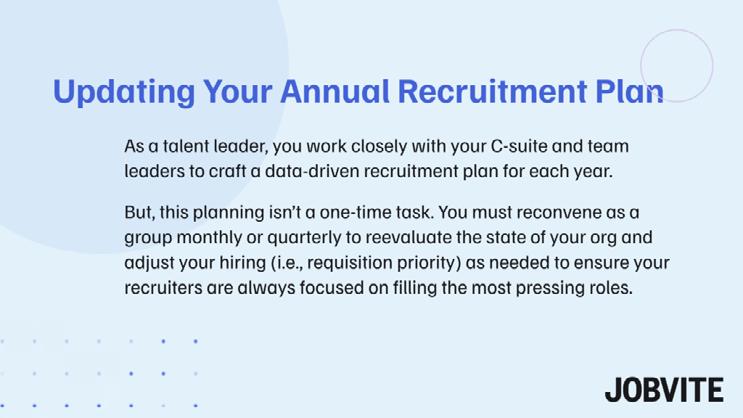
A st r on g b r a n d b oost s t h e p u b l ic p er c ep t ion of y ou r b u sin ess As it r el at es t o r ec r u it in g, t h ou gh , it a l so f ost er s t r u st w it h j ob seeker s a n d c a n c on v in c es t h ese f ol ks y ou r or g is t h e r igh t f it f or t h em .
B y in v est in g in y ou r or g ’ s r ep u t at ion a n d en su r in g a c on sist en t m essa ge t h r ou gh y ou r j ob p ost in gs, w eb sit e, a n d soc ia l c h a n n el s, y ou c a n gr eat l y en h a n c e y ou r p ool of p ot en t ia l c a n d id at es
Why revamping your recruitment plan regularly is critical to your hiring success
You can augment interview and candidate evaluation techniques
A key p a r t of r ev it a l izin g y ou r r ec r u it m en t p l a n is r ef in in g y ou r in t er v iew a n d a ssessm en t t ec h n iq u es
B y in c or p or at in g b eh a v ior a l in t er v iew q u est ion s, sim u l at ion exer c ises, a n d c a se st u d ies in t o y ou r h ir in g st r at egy, y ou c a n b et t er a ssess ea c h j ob c a n d id at e ’ s a b il it ies, p ot en t ia l , a n d w or k st y l e
I n t u r n , t h is c a n h el p y ou m a ke m or e in f or m ed , c on f id en t h ir in g d ec ision s
Your can work with HR to make your new-hire onboarding seamless

You r w or k d oesn’t en d on c e y ou ’ v e m a d e a j ob of f er A st r on g em p l oy ee on b oa r d in g p r oc ess is essen t ia l t o en su r e t h at y ou r n ew h ir es f eel w el c om ed a n d w el l -in t egr at ed in t o t h e c om p a n y c u l t u r e
B y p r ov id in g t h e n ec essa r y r esou r c es a n d su p p or t t o y ou r H R c ol l ea gu es f r om d a y on e w it h on b oa r d in g a n ew st a f f m em b er, y ou c a n c on t r ib u t e t o t h e n ev er -en d in g p r oc ess of r ea l izin g a p osit iv e a n d p r od u c t iv e w or k en v ir on m en t t h at en c ou r a ges em p l oy ee r et en t ion a n d en ga gem en t
How to assess and improve your recruitment plan
Th ose a r e t h e p r os of r ou t in el y r ev a m p in g y ou r r ec r u it m en t p l a n B u t , w h at a r e som e a c t u a l t a c t ic s a n d a c t iv it ies y ou sh ou l d l ook t o u p d at e? We c a n t h in k of a h a n d f u l of f oc u s a r ea s f or y ou r TA t ea m
Clearly de ne the job opening and speci cations
E n su r e y ou r t ea m u n d er st a n d s t h e p osit ion y ou a r e l ook in g t o f il l a n d t h e r eq u ir ed q u a l if ic at ion s
B egin b y r ev isit in g y ou r j ob sp ec if ic at ion s t o est a b l ish w h et h er t h ey a c c u r at el y d et a il t h e q u a l if ic at ion s, sk il l s, a n d exp er ien c e r eq u ir ed f or ea c h r ol e I n so d oin g, y ou ’l l a v oid w a st in g t im e on il l -su it ed a p p l ic a n t s a n d b et t er t a r get q u a l if ied c a n d id at es w h o a l ign w it h y ou r sp ec if ic n eed s
Streamline your talent screening and interviewing
A w el l -st r u c t u r ed a n d ef f ic ien t in t er v iew p r oc ess is p iv ot a l t o y ou r or ga n izat ion’s h ir in g su c c ess
B y en h a n c in g t h e q u a l it y of y ou r in t er v iew s v ia u p d at in g in t er v iew q u est ion s, st r ea m l in in g t h e in t er v iew p r oc ess (i e , r em ov in g u n n ec essa r y st a ges), a n d t r a in in g h ir in g m a n a ger s t o c on d u c t ef f ec t iv e in t er v iew s, y ou ’l l b e b et t er a b l e t o id en t if y t op “ c on t en d er s ” f or op en p osit ion s
Don’t forget about silver-medalist candidates
A c or e p a r t of a n y su c c essf u l r ec r u it m en t p l a n is m a k in g t h e ef f or t t o r ev isit a n d en ga ge w it h c a n d id at es y ou h a v e p r ev iou sl y c on sid er ed f or ot h er r ol es B y keep in g a l in e of c om m u n ic at ion op en w it h f or m er l y en ga ged p r osp ec t s, y ou r ed u c e t h e n eed t o sou r c e n et -n ew c a n d id at es f or r ol es
Ensure you have the right ATS software
Th is is a r gu a b l y t h e b iggest f a c et of y ou r t a l en t st r at egy t o r egu l a r l y ev a l u at e a n d im p r ov e
Tec h n ol ogic a l a d v a n c em en t s h a v e c om e t o t h e f or ef r on t in r ec en t y ea r s, m a k in g it ea sier t h a n ev er t o f in d a n d m a n a ge p ot en t ia l c a n d id at es I m p l em en t in g a n a p p l ic a n t t r a c k in g sy st em (ATS) t o h el p st r ea m l in e a n d m a n a ge y ou r r ec r u it m en t st r at egy ef f ec t iv el y is a n o-b r a in er f or y ou r or g

“ For t h ose [t a l en t t ea m s] n ot u sin g p u r p ose-b u il t t ec h n ol ogy, n ow c ou l d b e t h e t im e, or r isk l osin g ou t on t op -t ier c a n d id at es, ” E m p l oy SVP Peop l e & Ta l en t Cor ey B er key r ec en t l y w r ot e f or For b es.
F ind out how you and your t ale nt t e am can exe cut e your re cruit ing st rat e gie s more e f f e ct ive ly and e f f icie nt ly wit h J obvit e’s powe rf ul e nt e rprise applicant t racking syst e m

Watch Product Tour Reques t a Demo News letter Sign Up Pro duct s Ev o lv e Tale nt Acquis itio n S uite ATS & O nbo ard C are e r S ite s S o urce & C RM Analy tics Emplo y e e Re fe rrals Inte rnal Mo bility Jo b Bro adcas t C andidate Me s s aging Re s o urce s Re s o urce Hub Blo g C us to me r S to rie s Ev e nts & We binars Marke tplace Partne rs Ev o lv e Frame wo rk Jo bv ite Acade my Co mpa ny Abo ut C are e rs C o ntact Pre s s & Ackno wle dge me nts W hy Jo bv ite Suppo rt C us to me r S uppo rt Jo b S e e ke r S uppo rt S o ftware S tatus C o mpliance J az z H R , Lever, J ob vite, and NX TThing R PO are b rands of Em p l oy Inc Term s and conditions, f eatu res, su p p ort, p ricing and service op tions are su b ject to change w ithou t notice By accessing and u sing this p age you agree to T e rm s and C o nd it io ns © 20 23 Em p l oy Inc Al l rights reserved Privac y Po lic y | T e rm s o f Us e | Se c u rit y Would you like to comment?


HR.com’s Future of Talent Acquisition 2023-24 Talent Acquisition Excellence September 2023 For more information: 1.877.472.6648 sales@hr.com www.HR.com/epubs The HR Research Institute tracks human resources trends and best practices. Learn more at hr.com/featuredresearch
Mission Possible: Redefining the Candidate Experience
How recruiters can win the race for talent
 By Jackie Schierenberg, CommonSpirit Health
By Jackie Schierenberg, CommonSpirit Health
Sometimes, staying ahead of the talent acquisition curve can feel like an impossible mission. Recruiters are constantly challenged with keeping up with the ever-changing landscape and then adapting to it. When they complete one task, an even more urgent one requires their attention. But, should they accept the mission, recruiters must remember that even Tom Cruise doesn’t work alone.
As they adopt innovative strategies to find the best talent, recruiters must bring along a trusty and adept companion on the journey: The candidate. Before they even hit “apply” to their onboarding and career path at an organization, the candidate’s experience matters and shapes the future of talent acquisition. In fact, according to new research from iCIMS, 56% of job seekers shared that a bad candidate experience would change their perception of a brand and make them less likely to be a consumer of it.
Talent Acquisition Excellence presented by HR.com September 2023 61 Submit Your Articles
TOP
PICK
Below are some mission-critical steps throughout the candidate experience that recruiters must remember to help stay abreast of evolving talent needs and win the race for talent.

Pre-Mission Recon: Creating Awareness
The candidate’s experience begins far before they submit their resume. Just as any good spy takes recon of their mission before launching into action, candidates conduct preliminary research on organizations with job openings they are considering. From a recruiter’s point of view, this presents the opportunity to create visibility and awareness for their organization, culture and brand.
I dealt with this personally at CommonSpirit Health when we realized we weren’t presenting a unified experience on the career site, the application process and the onboarding workflow. CommonSpirit Health has 140+ hospitals in 24 states and four different logos. Although CommonSpirit Health is one health system, you likely recognize us as Dignity Health, Virginia Mason Franciscan Health, CHI Health, St. Luke’s Health and many more in other parts of the country, leading to a complicated employer branding landscape. As a large organization with a house of logos, presenting a cohesive experience for candidates is essential, no matter where the touchpoint occurs.
We used to have multiple microsites with different looks and feel; we now have one career site that showcases our various logos. This push felt like a giant leap of faith at the time, but it has been a game changer in aligning the house of logos under one brand tagline – “Hello humankindness” — where we all hold the power to heal. As a result, we now have one candidate experience, regardless of location. Since making this shift, last year, our talent acquisition team reviewed over 772K applications, increased our quality applications by 8% and filled over 54K hires.
Unveiling the Mission Briefing: Employeegenerated Videos
Once initial awareness is created, a candidate takes a further dive into your organization – exploring your culture, values and expectations. Whether or not these key points align with the candidate determines if they want to move forward with applying. While photos, testimonials and blogs can give a glimpse of what it might be like to work for your organization, employee-generated videos have proven to be a cost-effective method for creating instant connections with candidates.
It may take a lot of work to get people excited to go on video at first. We even had folks saying, “I’m a clinician, not an actor!” But there was a real sense
Talent Acquisition Excellence presented by HR.com September 2023 62 Submit Your Articles
Mission Possible: Redefining the Candidate Experience
of pride when they understood the purpose. That authenticity and excitement for the culture and community is what shines through and makes an impact on a potential candidate.
The Undercover Connection: Text Engagement
Now that the candidate is ready to begin the application process, it is time to facilitate an experience with seamless communication. No encrypted code or carrier pigeons are needed in this mission, just your cell phone.
In this digital age, mobile phones are king. Let’s face it: It’s not uncommon to turn your car back around to retrieve your phone when you leave it at home or drop everything to find a charger when your battery is running low. Mobile phones are a form of communication that connects virtually everyone 24/7. Studies even show that it takes the average person around 90 minutes to respond to an email, whereas it takes only 90 seconds to respond to a text message.
As a result, getting access to a candidate through mobile is game-changing. Candidates are looking for a quick process, with 64% of US college seniors expecting the entire process, from application to job offer, to take three weeks — about half the actual time (6 weeks). Recruiters can help speed up this process, making it less of a headache for the candidate, getting quick answers, scheduling interviews or sending offers all over text.
Securing the Infiltration: Retention
Historically, the job offer may have been where this mission ended. The candidate experience used to solely encompass getting the candidate’s attention, getting them to apply and ultimately accepting the job. When the candidate signs on the dotted line, the employer’s job is done, right? In today’s market, employers can’t risk losing their top talent; we are focused on retention and creating an environment where employees can grow their careers.

Talent acquisition must come together with operations to build programs internally to keep talent on for longer stretches of their career. At CommonSpirit Health, this comes down to engagement and internal mobility. Building advanced learning platforms and unique career paths with employees helps them see opportunities for continual growth. Employees are excited to stay with companies when they can visualize their path upward and recognize your value and investment in their careers.
Mission: Accomplished
If you’ve gotten this far, you’ve successfully turned creating a positive and dynamic candidate experience into a mission: possible. What may have seemed like an unconquerable process is simpler than you might think. At its most basic, a candidate wants to connect with you and your organization and have a simple and quick application process. When it comes to building a future talent pipeline, it’s all about blending innovation, engagement and a touch of adventure.
Would

Talent Acquisition Excellence presented by HR.com September 2023 63 Submit Your Articles
Jackie Schierenberg is VP, candidate experience, at CommonSpirit Health
you like to comment?
Mission Possible: Redefining the Candidate Experience
The Essential Role Of Job Descriptions In Compensation Planning
Making fair and equitable compensation decisions with job descriptions
By Jean Roque, Trupp
Job descriptions provide a clear understanding of the expectations and responsibilities associated with a particular role. They guide employees, enabling them to understand how their position fits within the context of a larger team or department. But job descriptions also play a pivotal role in compensation planning, as they define a comprehensive set of skills,
qualifications, and responsibilities required for each position within the company, helping employers make fair and equitable compensation decisions.
Let’s take a closer look at the essential role job descriptions play in compensation design.

Talent Acquisition Excellence presented by HR.com September 2023 64 Submit Your Articles
Job Evaluation
A job description provides the details needed to assess the relative value of different jobs within an organization. By analyzing the responsibilities, qualifications, and complexity of the position, organizations can determine the role’s worth compared to others.
Market Benchmarking
A detailed and well-crafted job description allows organizations to conduct market benchmarking to assess how similar roles are compensated in the external job market. Organizations can gain insights into industry standards and trends by comparing job responsibilities and requirements to market data. This aids in setting competitive compensation levels to attract and retain qualified talent.
Compensation Surveys
Job descriptions are critical to accurate and effective participation in compensation surveys conducted by industry associations or other external entities. Organizations provide job descriptions that accurately describe their roles, matched with similar positions in the survey data to determine the appropriate compensation range.
Internal Equity
Job descriptions help establish internal equity by ensuring fair and consistent compensation. By clearly defining the responsibilities, qualifications, and scope of the role, job descriptions serve as a reference point for comparing positions within the company. This lets organizations ensure that compensation is appropriately aligned based on each job’s level of responsibility and requirements.

Job Grading and Salary Structure
A good job description provides the necessary information to develop job grading systems and salary structures. Companies can establish a systematic and objective approach to assigning salary grades and determining compensation levels by focusing on factors, such as skills, knowledge, responsibilities, and qualifications outlined in job descriptions. This helps ensure internal consistency and transparency in compensation practices.
Performance-based Compensation
A job description serves as a foundation for setting performance expectations and goals for an employee. Clear job descriptions enable organizations to define key performance indicators and establish performance metrics that align with responsibilities and objectives. This enables organizations to implement performance-based compensation programs, such as merit-based salary increases, bonuses, or other incentives.
Compliance
Job descriptions help organizations ensure compliance with laws and regulations related to compensation, such as minimum wage laws, overtime eligibility, and pay equity requirements. Accurate job descriptions that outline a position’s essential functions and requirements aid in adhering to legal obligations and avoiding legal risks.
Job descriptions provide the foundation for determining compensation by offering a baseline for assessment of a role in comparison with others within the company and with similar positions in the broader industry. They are a critical tool in establishing fair and competitive compensation practices.
Jean Roque is the President and Founder of Trupp HR, Inc.
Would you like to comment?
Talent Acquisition Excellence presented by HR.com September 2023 65 Submit Your Articles
The Essential Role Of Job Descriptions In Compensation Planning
How AI Can Revolutionize Lead Generation In Talent Acquisition
Why HR professionals can’t afford to use AI for lead generation in talent acquisition
By Gergo Vari, Lensa, Lensa Inc.
Inrecent years, the job market in the US went through unprecedented turmoil coined as, “The Great Resignation.” Quit rates soared as high as 3% per month, not to mention the rise of quiet quitting, where employees simply disengaged or were content to do the bare minimum as opposed to thriving and excelling in their jobs and careers. Something was seriously wrong with the job market.
Experts proclaim that The Great Resignation is over. Does this mean that things are getting back to normal?
Not exactly.
The job market was broken for a reason. Employees in all industries and across all sectors of activity were dissatisfied, pointing to a systematic problem. And a systematic problem calls for a systematic solution.
In this short article, we’ll take a look at the role AI has played in reinvigorating the job market and how its continued implementation and improvements in its application can revolutionize talent acquisition, notably in the important aspect of lead generation.

Talent Acquisition Excellence presented by HR.com September 2023 66 Submit Your Articles
TOP PICK
How Is AI Used in Talent Acquisition?
Advanced machine learning algorithms comb through millions of data points from resumes and job offers in the blink of an eye. The analysis of these data points enables recruiters and HR professionals to make data-driven decisions and provide invaluable help in the following areas.
Enhanced candidate sourcing
Social media sites, job boards, and a host of other online platforms can be mined to find those candidates with the perfect profile, professional experience, and background. Not only does this save recruiters and HR professionals countless hours of tedious work spent on data aggregation, but also provides them with numerous leads for talent acquisition.
These leads are:
● Pre-screened - Based on keywords and criteria you determine ahead of time.
● Bias-free - Allowing recruiters and HR professionals to make data-driven decisions that promote diversity and inclusion in the workplace.
● Personalized - By using the data provided by the leads they can be contacted and addressed in ways that are specific to the potential candidate.
Predictive Analytics: Knowing what you didn’t know you needed to know
Knowing is half the battle. And often, recruiters and HR professionals fall short in this part of the process. The revolution AI is bringing to talent acquisition begins with knowing exactly what kind of talent needs to be acquired.
By analyzing historical data (the career paths, promotions, and staying power of millions of workers), AI algorithms are able to identify patterns, spot trends, and make predictions concerning the short and long-term career trajectories of potential applicants. There’s no point in going through all the time and expense of recruiting, onboarding, and training a candidate if he or she is just going to leave a few months later.
With predictive analysis, AI algorithms are able to better identify the right candidate who will thrive in the role, thus greatly reducing the chances of the employee leaving after only a short stint or simply not working out.

Talent Acquisition Excellence presented by HR.com September 2023 67 Submit Your Articles
How AI Can Revolutionize Lead Generation In Talent Acquisition
Predictive analytics can improve hiring even to the point of forecasting when and where your hiring needs will pop up. The vast majority of causes for employee turnover are preventable. Knowing when and where potential problems lie will give HR professionals a head start on mitigating (if not outright avoiding) the negative consequences.
In HR, AI Technology Is Not Being Used to its Full Potential
A growing number of HR professionals are using machine learning and AI algorithms to automate much of the recruitment process, especially to:
● Filter out unqualified applicants.
● Contact applicants for interviews or follow-up steps.
● Conduct skill assessment tests.
However, many HR professionals are not taking advantage of AI when it comes to lead generation for talent acquisition. Instead, they are relying on more or less traditional methods to generate leads while their competitors are using AI and getting a huge advantage.
Questions You Should Ask Yourself
1. Are you using AI algorithms to forecast where and when your hiring needs are likely to surface? Or are you planning on meeting the challenges once they arrive without a heads-up or a head start?
2. Are you using AI algorithms to consistently comb through social media sites, job boards, and industry-related platforms to keep an eye on potential talent and generate leads? Or are you hoping the right talent finds you at the right time (before your competitors and before it’s too late)?
3. Are the leads you’re generating pre-screened and based on data as they would be using AI algorithms? Or are the leads you get based on other criteria and are potentially heavily susceptible to biases?
If your answers reflect that you are not taking advantage of the many benefits of implementing AI algorithms in lead generation, just know that a great deal of your competitors are. Final question: Are you in a position to allow your competitors that big of a competitive advantage?
Conclusion
The revolution has already begun. Hundreds of thousands of recruiters and HR professionals are using machine learning and AI algorithms to assist in lead generation in talent acquisitions. With enhanced candidate sourcing, predictive analytics, the reduction of hiring bias, and the elimination of many repetitive tasks, the benefits are simply too great not to.


Talent Acquisition Excellence presented by HR.com September 2023 68 Submit Your Articles
Gergo Vari is Founder and CEO of Lensa Inc Would you like to comment?
How AI Can Revolutionize Lead Generation In Talent Acquisition

Talent Acquisition Excellence presented by HR.com September 2023 69 Submit Your Articles ePublication EditorialCalendar2023 Checkoutthenewandupcomingthemed HRtopicsinLeadershipExcellence Check ePublications Editorial Calendar Here. Would you like to submit an article? | Write to us at ePubEditors@hr.com Submission Guidelines 1 Sourcing & Candidate Engagement Jan 2023 2 The State of Contingent Work Feb 2023 3 Solving Labour Shortage Mar 2023 4 Recruitment Advertising Apr2023 5 Pre-Hiring Tools May 2023 6 Interviewing, Screening and Social Profiling to Improve Quality of Hire Jun 2023
Enhancing Executive Recruitment: The Case For Executive Search Software Over Traditional ATS
Are executive search software an indispensable asset for modern executive recruiters?
By Jason Starr, Ikiru People
“We manage our executive search with the Corporate ATS”.
It’s increasingly the case that corporations are using “direct search” type techniques to fill strategic positions. Be it a member of the C-suite, or a product manager for a new project, organizations are disinclined to limit themselves to active candidates when it really matters.
But many embryonic in-house search teams are given technology that is not fit for purpose. The clue is in the name. An ATS is - literally- an applicant tracking system. Passive candidates don’t apply. An executive search team using a traditional ATS is forced to operate with one hand tied behind its back.
Ironically, while these new in-house teams aim to operate like more traditional executive search firms, search firms are genuinely built purely to operate on a search model – ATS systems are rarely considered; instead, these firms tend to rely on dedicated executive search software.
Navigating Unique Workflows
The crux of the matter lies in the type of candidates being pursued. Traditional ATS systems excel in handling a high volume of active job seekers across various industries and levels. These systems streamline the process by managing applications and tracking candidate progress.
However, when it comes to executive recruitment, the narrative shifts due to the nature of senior-level candidates, who tend to be more passive in their job search.
Senior executives, often ensconced in their current roles, usually rely on word-of-mouth networks, industry connections, and direct approaches from executive recruiters for potential career moves. This paradigm shift necessitates a solution that caters to these passive candidates.
Talent Acquisition Excellence presented by HR.com September 2023 70 Submit Your Articles
The Role of Executive Search Software

1. Targeted candidate sourcing: Executive search software equips recruiters with advanced sourcing tools. Instead of waiting for applications, recruiters can proactively identify potential candidates from extensive databases. These tools help recruiters gather insights into candidates’ expertise, professional journey, and accomplishments.

2. Focused outreach and relationship management: Engaging senior-level candidates mandates a personalized approach. Executive search software facilitates precise outreach, enabling recruiters to build rapport, comprehend candidates’ motivations, and present opportunities aligned with their aspirations.
3. Maintaining confidentiality: Given the sensitive nature of executive searches, where candidates might be currently employed, confidentiality is vital. Executive search software is designed to manage discreet interactions, preserving candidate privacy.
4. Streamlined hiring manager collaboration: Collaborating with clients is integral to executive search. Executive search software fosters smooth communication, facilitating the sharing of candidate profiles and collaborative decision-making, bolstering the recruiter-client partnership.
5. A comprehensive perspective: Unlike traditional ATS systems that predominantly track the candidate’s application journey, executive search software provides a holistic view of the recruitment process. This encompasses monitoring interactions, feedback, and touchpoints with candidates and clients, offering a well-rounded overview.
Conclusion
In an era where securing top-tier talent requires finesse and adaptability, executive recruiters need tools that align with the unique requirements of executive recruitment. While conventional ATS systems serve their purpose of managing large-scale applications, they prove inadequate for the passive nature of senior-level candidates.
The adoption of executive search software not only grants access to refined sourcing and outreach capabilities but also empowers recruiters to navigate executive recruitment adeptly and with a tailored approach.
In a competitive landscape where executive talent is scarce, executive search software emerges as an indispensable asset for modern executive recruiters.
We’d love to show you how Talentis can help your search team go beyond the constraints of an ATS –do book a demo and we’ll happily set up a free trial!
Jason Starr is the Chief Executive Officer of Ikiru People. Jason joined Dillistone Group in 1994, becoming Marketing Manager in 1996 and Managing Director of the UK business in 1998. Following an MBO, Jason became the Chief Executive of the Group. Jason was appointed a Non-Executive Director of AIM-listed PCIPAL PLC on January 1, 2015.
Would you like to comment?
Talent Acquisition Excellence presented by HR.com September 2023 71 Submit Your Articles
Enhancing Executive Recruitment: The Case For Executive Search Software Over Traditional ATS
HRCI® & SHRM® CERTIFICATION PREP COURSES
GROUP RATES AVAILABLE
For HR Professionals
Show that management values the importance of the HR function, and has a commitment to development and improvement of HR staff.
Ensure that each person in your HR department has a standard and consistent understanding of policies, procedures, and regulations.
Place your HR team in a certification program as a rewarding team building achievement.
For Your Organization
Certified HR professionals help companies avoid risk by understanding compliance, laws, and regulations to properly manage your workforce.
HR Professionals lead employee engagement and development programs saving the company money through lower turnover and greater productivity and engagement.
A skilled HR professional can track important KPIs for the organization to make a major impact on strategic decisions and objectives, including: succession planning, staffing, and forecasting.
HR.com/prepcourse CALL TODAY TO FIND OUT MORE 1.877.472.6648 ext. 3 | sales@hr.com
1 Less expensive than a masters or PhD program, and very manageable to prepare with
2. legislation and best practices
3. Recognized, Industry benchmark, held by 500,000+ HR Professionals
Group Rate Options
We offer group rates for teams of 5+ or more for our regularly scheduled PHR/SPHR/ SHRM or aPHR courses.
For groups of 12+, we can design a more customized experience that meets your overall length of the course.
Groups rates for HRCI exams are also available as an add-on.
All group purchases come with 1 year of HR Prime membership for each attendee to gain the tools and updates needed to stay informed and compliant

CALL TODAY TO FIND OUT MORE 1.877.472.6648 ext. 3 | sales@hr.com | HR.com/prepcourse
1 2 3
How AI And Data Science Are Transforming Talent Acquisition In 2023 And Beyond
By Alana Pratt, BrightHR Canada
Aswith the rest of the HR landscape, talent acquisition is rapidly transforming thanks to technological advancements.
Innovations like artificial intelligence (AI( and data science have made the once time-consuming and nerve-wracking process of finding the perfect talent for your organization much more streamlined, efficient, and cost-effective.
Let’s explore some of the profound ways AI has impacted talent acquisition and how organizations can tap into the benefits of this resource.
Provides Access to a More Extensive and More Diverse Pool of Qualified Candidates
Connecting with more candidates and having diversity in the workplace is a common challenge for many organizations today. Not only does it negatively impact your organization’s image and culture, but it also cuts you out of access to the potential skills, improved decision making and experience the valuable contributions these individuals can bring.
AI tools help recruiters and HR teams optimize finding and screening a larger pool of candidates as it has a broader reach and less bias. Technology-based sourcing uses careful evaluation methods that align with ethical and legal standards to sift through candidates on various channels and platforms to find the best candidates for your role. With fewer inherent biases than traditional candidate sourcing, your organization will likely see more well-rounded, diverse, and high-potential candidates.

Talent Acquisition Excellence presented by HR.com September 2023 74 Submit Your Articles
A quick look at the latest trends and best practices for hiring top talent in the digital age.
TOP PICK
Analyzes and Matches Candidates based on Set Metrics like Skills, Competencies, and Personality
Data-driven recruitment is more efficient as it uses predictive models to spot the best candidates. Using algorithms and data points from candidates’ resumes like licenses, education, and previous experience to match their abilities and skills with the open role’s duties and responsibilities helps filter out candidates till only those who would excel at the job remain. It even goes as far as predicting candidates’ personalities and behavior by scoring their answers to questions on interpersonal skills and measuring how they would react in different work-related situations.
Optimizes the Hiring Process and Decisions through Automation
Organizations can use historical data on previous recruitment strategies to identify patterns, streamline processes that didn’t work, and create a more personalized approach for better hiring outcomes. Relying on facts instead of sentiments or gut feelings makes it easier to make better hiring decisions that lead to candidate success.
AI helps combine and translate the results of your interview using machine learning. Candidates are ranked according to the criteria you set, and the system provides recommendations on who is the best fit for the role to ensure you don’t overlook the top candidates with the qualifications required to thrive. This helps reduce hiring time and allows organizations to make objective hiring decisions.
Improves Candidate Experience and Employer Reputation
The candidates’ experience throughout the hiring process is also an important metric to pay attention to. Successful and unsuccessful candidates give reviews of your recruitment process, which can be vital to your future hiring outcomes. In a highly competitive job market, you want to stand out for the right reasons and keep attracting top talent.
Data and analytics from previous talent acquisition activities provide informed insights into candidate

experiences, which your organization can use to optimize your hiring strategies.
A scan of candidates’ behaviors on job boards or other hiring platforms can also be used to understand candidates’ preferences, values and what they expect from prospective employers. This information helps you craft a compelling employer value proposition, such as a benefits package, culture, mission, and vision attractive to your ideal candidate.
Supports Employee Retention and Development
The talent acquisition process doesn’t end immediately after a candidate is hired. It’s crucial for organizations to also work hard on engaging with and continuously developing their employees to foster retention. Losing an employee is expensive, as you’ll have to spend more hiring and training their replacement, so using AI to understand and strengthen employee retention efforts can be a game changer in the long run.
Using AI to interpret employee data, goals, and preferences can help you form better strategies for employee engagement and provide personalized recommendations for employee growth and development. This will show your commitment to employee development, which is a great way to foster employee loyalty.
Technology is not only changing the way employers find, attract, and retain talent but also the way they work with them. AI and data science offer many benefits and opportunities for talent acquisition, and to use these tools effectively, your organization needs to change its mindset, toolset, and skillset. This will help you create a talent acquisition culture that enables you to find and hire the right talent in the digital age.
Talent Acquisition Excellence presented by HR.com September 2023 75 Submit Your Articles How AI And Data Science Are Transforming Talent Acquisition In 2023 And Beyond
you like to comment?
Alana Pratt is HR Advice Specialist at BrightHR Canada
Would
The State of Employee Retention Oct 18, 2023 REGISTER 10 Tips to Improve the Quality of Hiring Oct 4, 2023 REGISTER The Future of Diversity, Equity, Inclusion and Belonging Sept 27, 2023 REGISTER
Today: Where We Stand and How We Can Do Better September 27, 2023 10:00 AM - 11:00 AM ET REGISTER Modernizing Your Benefits Mid-Year Review: Let’s Talk Compliance September 28, 2023 11:00 AM - 12:00 PM ET REGISTER
Workers September 26, 2023 1:00 PM - 2:00 PM ET REGISTER VIRTUAL EVENTS & HR.COM WEBCASTS UPCOMING www.hr.com/upcoming_webcasts www.hr.com/virtualconferences View our Upcoming Webcasts Schedule and Register Today! WEBCASTS
Compliance Success: Must-Know Tips and Troubleshooting October 5, 2023 3:00 PM - 4:00 PM ET REGISTER Smarter Recruiting and Onboarding Strategies for Global Hiring Leaders October 4, 2023 10:00 AM - 11:00 AM ET REGISTER WEBCASTS
EVENTS
Today!
DEIB
Where You Work Matters: Getting Payroll Tax Compliance Right for Remote and Hybrid
I-9
VIRTUAL
View our Upcoming Virtual Conference Schedule and Register
Thank you for partnering with us!
Circa provides OFCCP compliance management and recruiting technology solutions to deliver qualified candidates on a level, equitable playing field for organizations.

Designing better ways to work by providing cutting-edge products and exceptional experiences within HR, Talent, Time Management, Benefits and Payroll.

Global employment partner
Omnipresent provides techenabled business solutions combined with personalized expertise to support hiring people globally.

Paycom (NYSE:PAYC) offers cloud-based human capital management software to help businesses streamline employment processes, from recruitment to retirement. With a robust suite of products including payroll, time and labor management.

Jobvite is leading the next wave of talent acquisition innovation with a candidatecentric recruiting model that helps companies engage candidates with meaningful experiences at the right time, in the right way, from first look to first day.

LEARN MORE LEARN MORE
PARTNER WITH US
THANK YOU
LEARN MORE LEARN MORE LEARN MORE
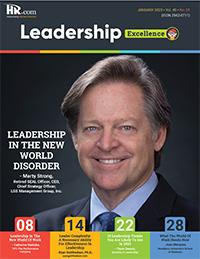












Like to submit an article? Use our online submission form or for more information go to www.hr.com/ExcellencePublications Publications 13 Targeted Publications to Reach Your Audience Informing, Educating, Enlightening and Assisting HR professionals in their personal and professional development, the Excellence series offers high-quality content through the publications!








































 By Clare Horvik, Verified Credentials, LLC
By Clare Horvik, Verified Credentials, LLC







 — Pete Tiliakos, GxT Advisors
— Pete Tiliakos, GxT Advisors







 By Nick Livingston, Honeit
By Nick Livingston, Honeit


























 By Employ
By Employ






 By Jackie Schierenberg, CommonSpirit Health
By Jackie Schierenberg, CommonSpirit Health






























